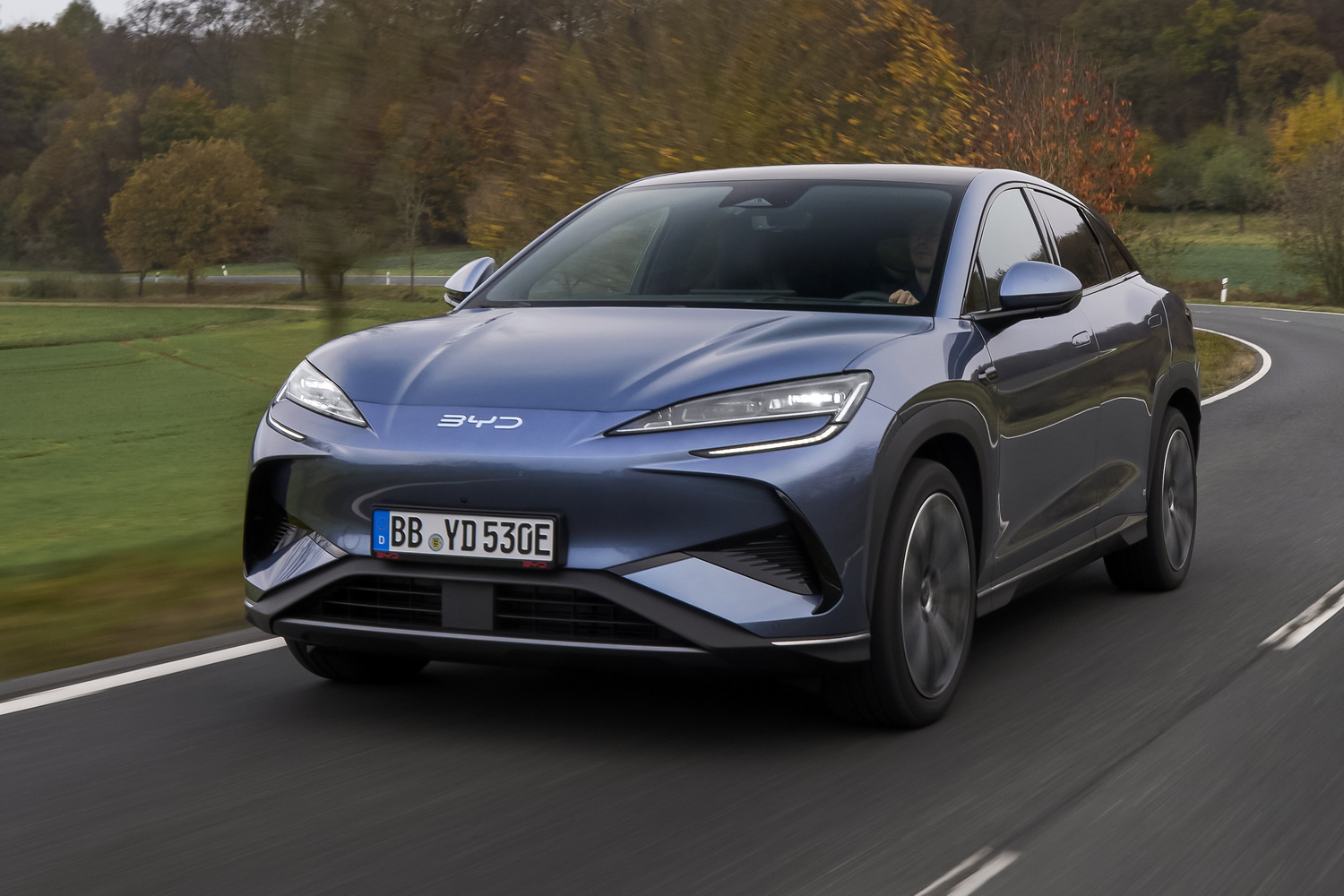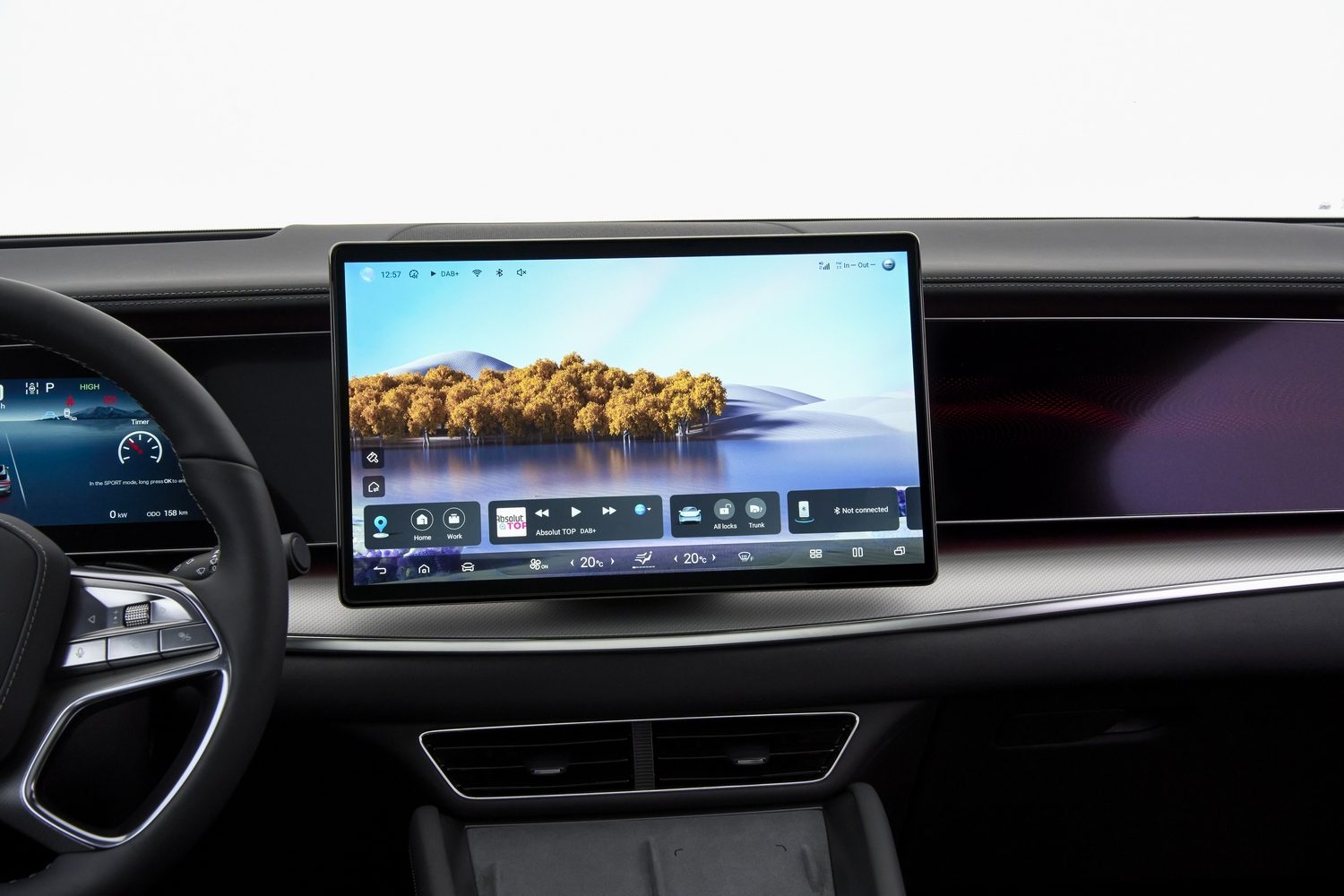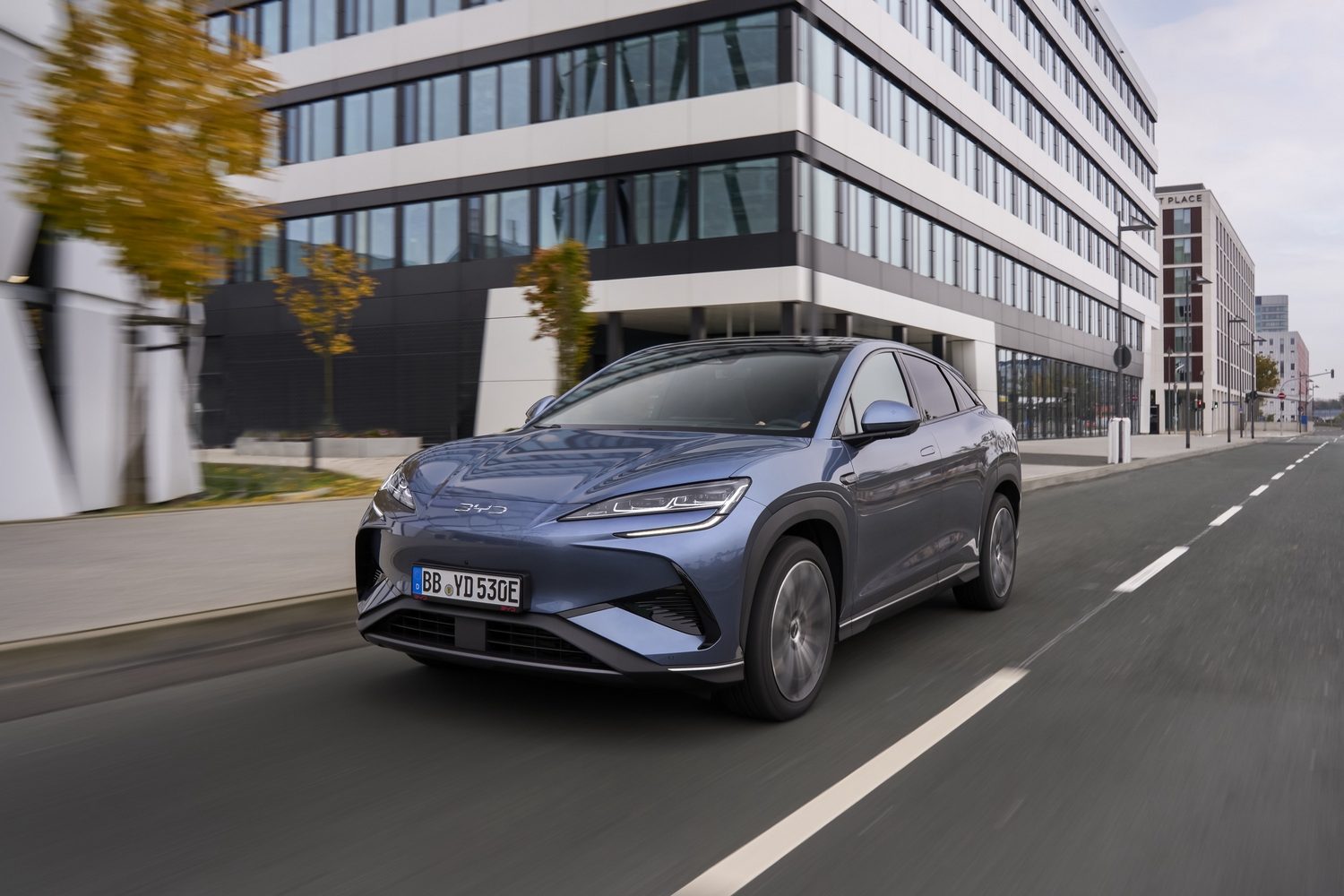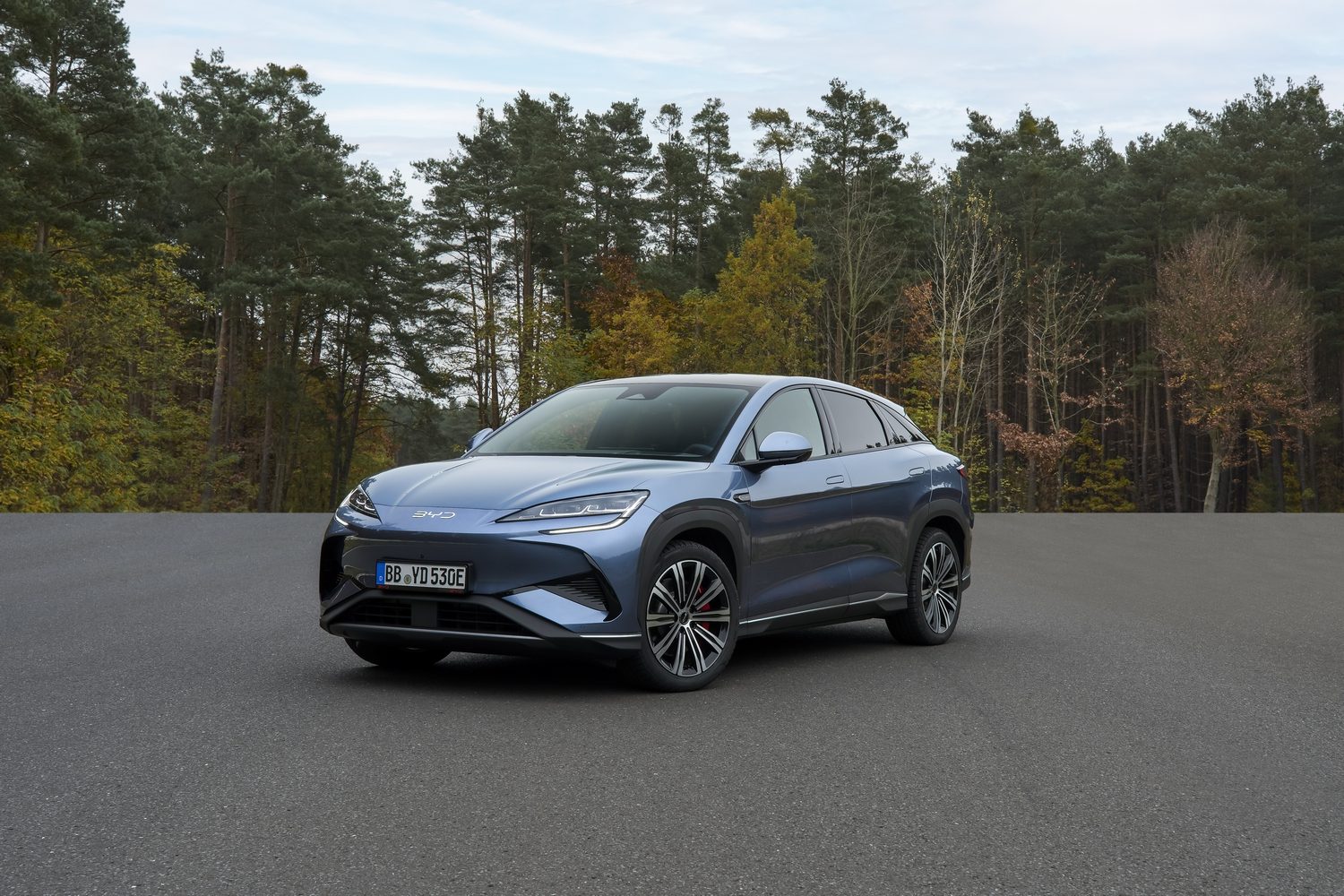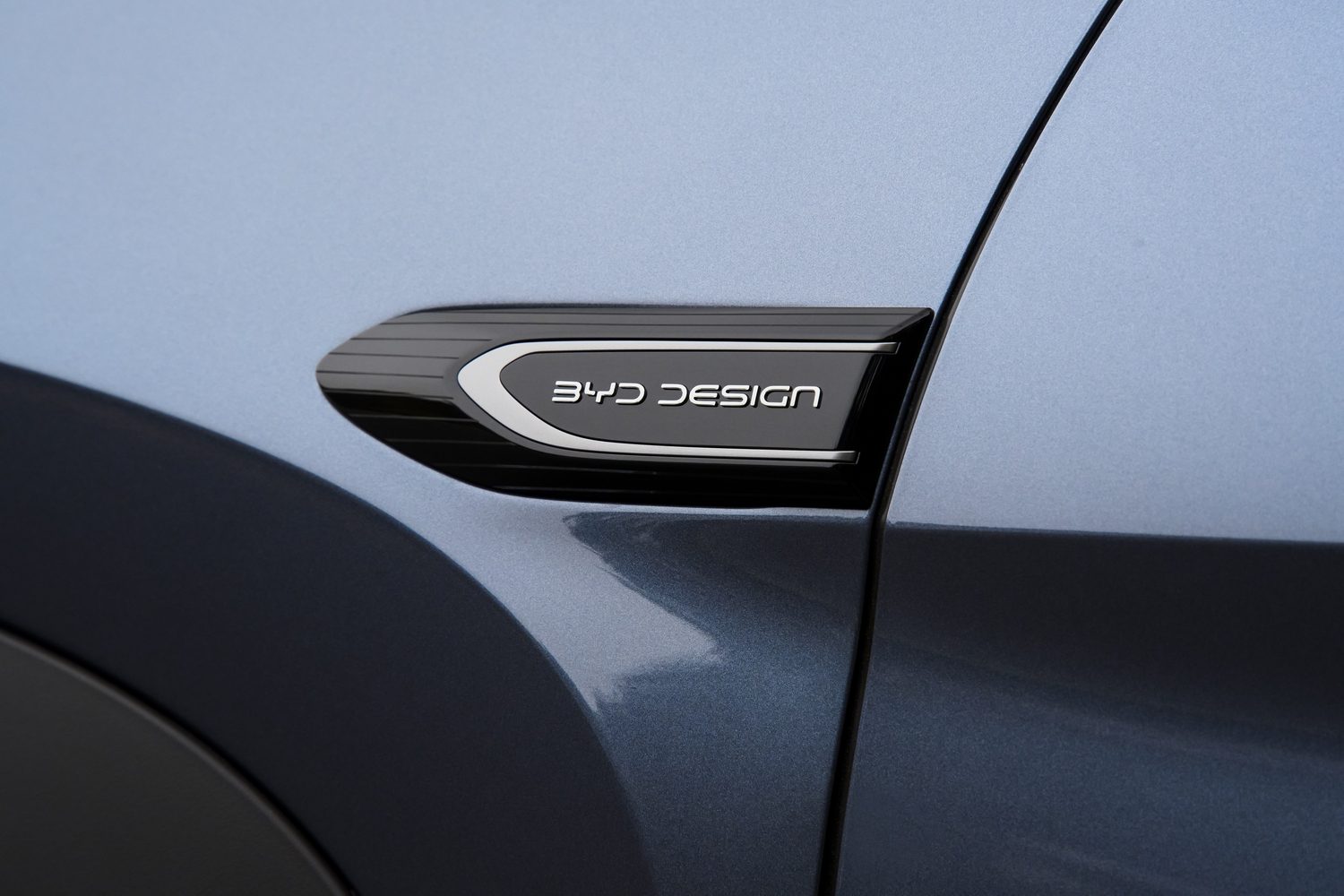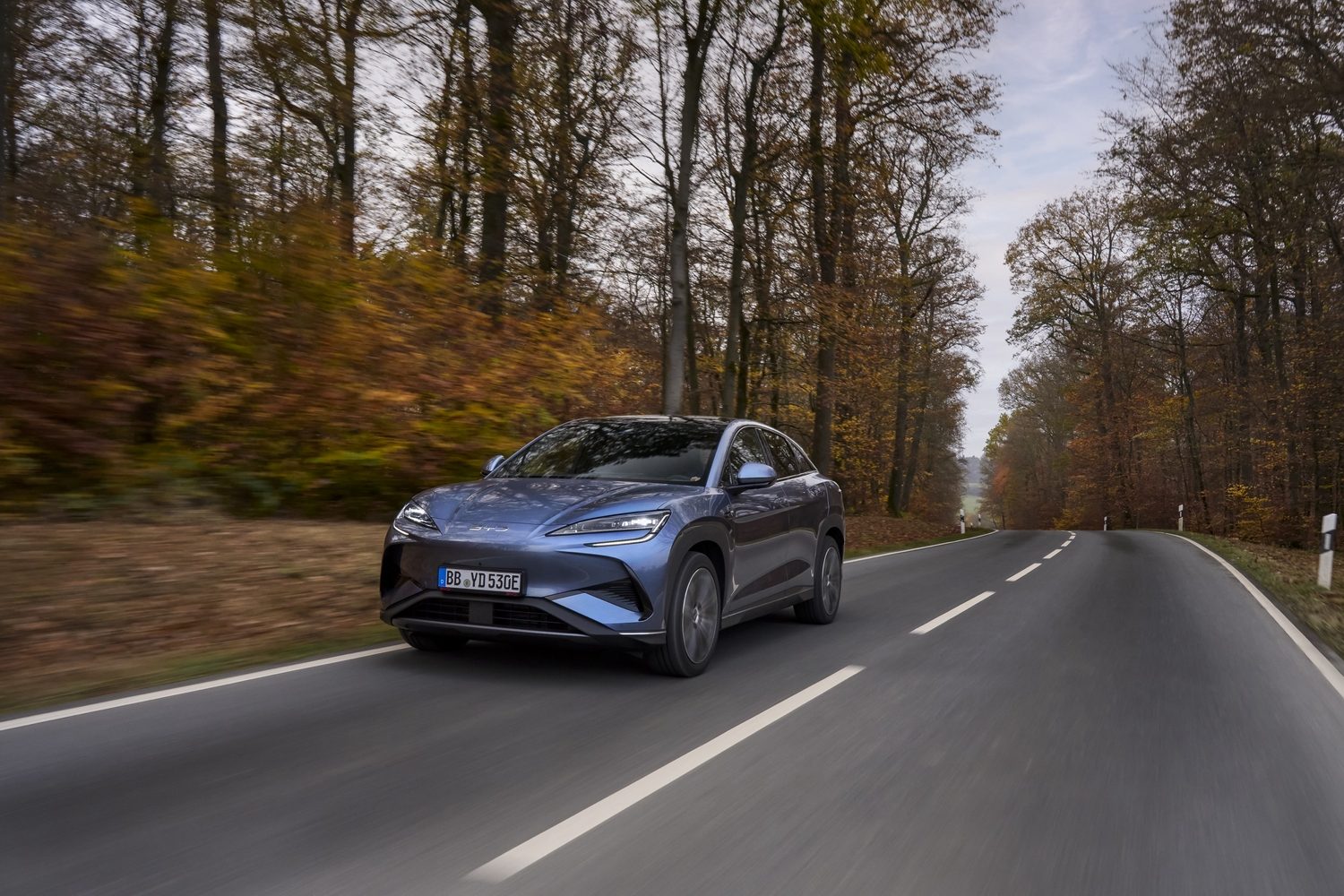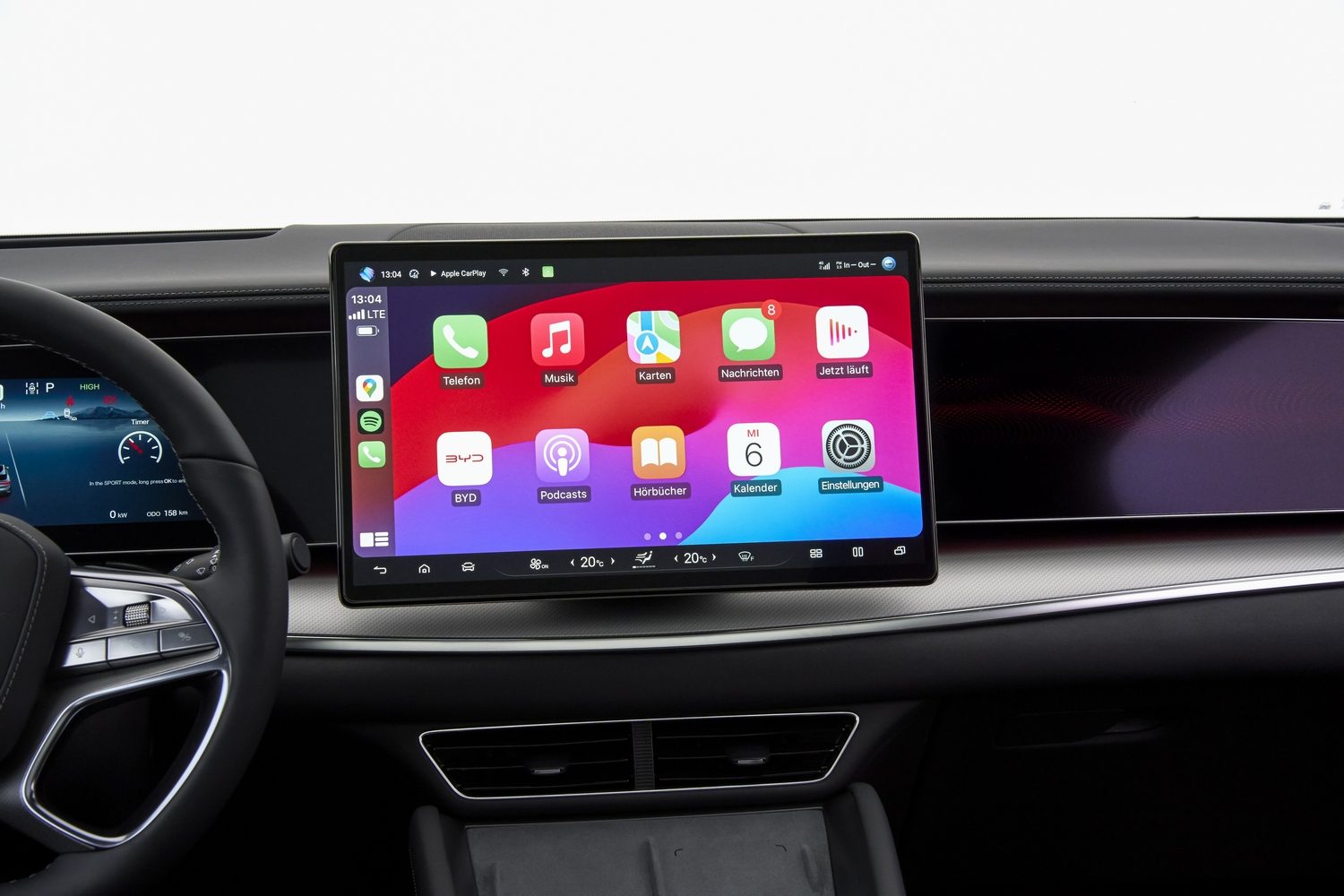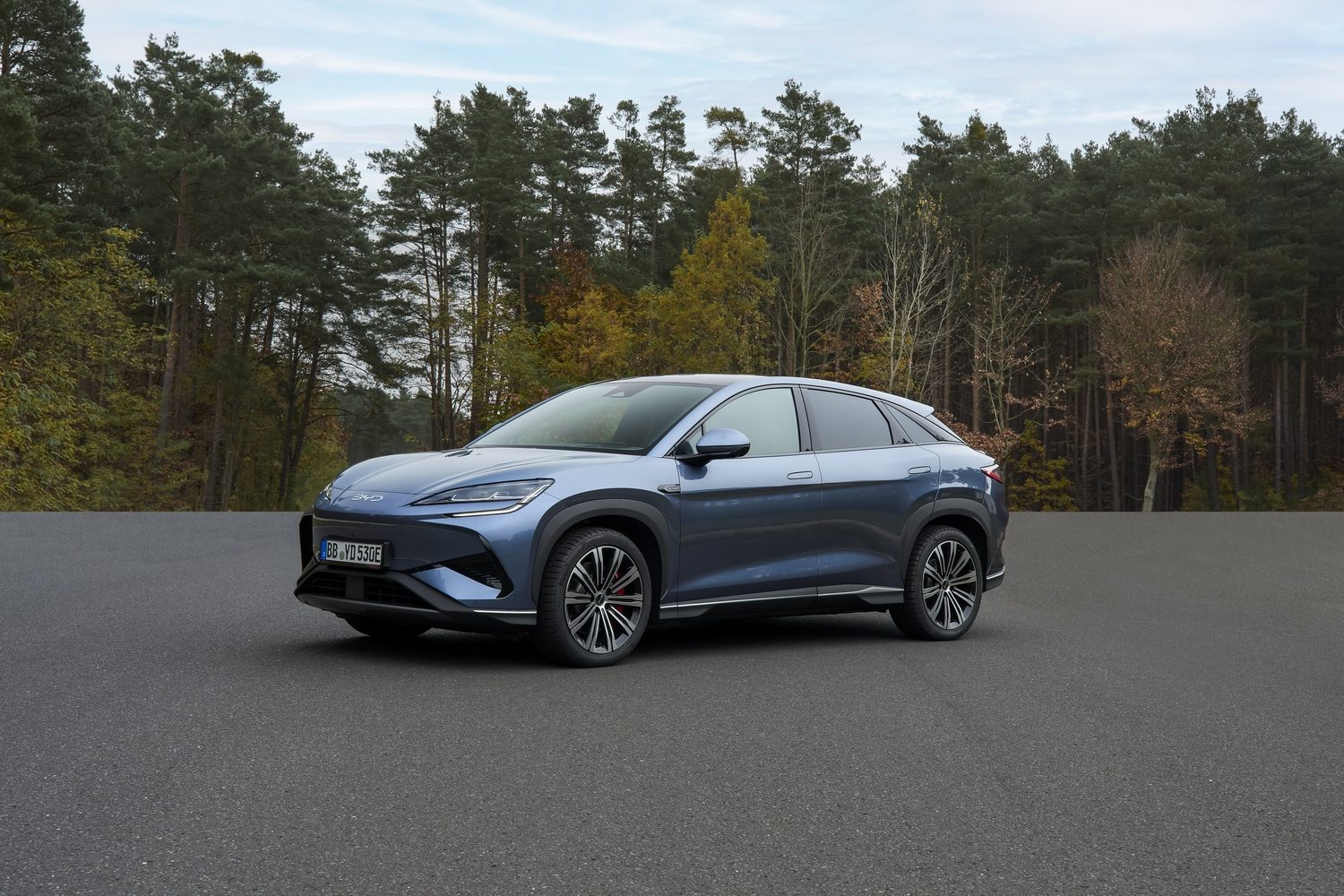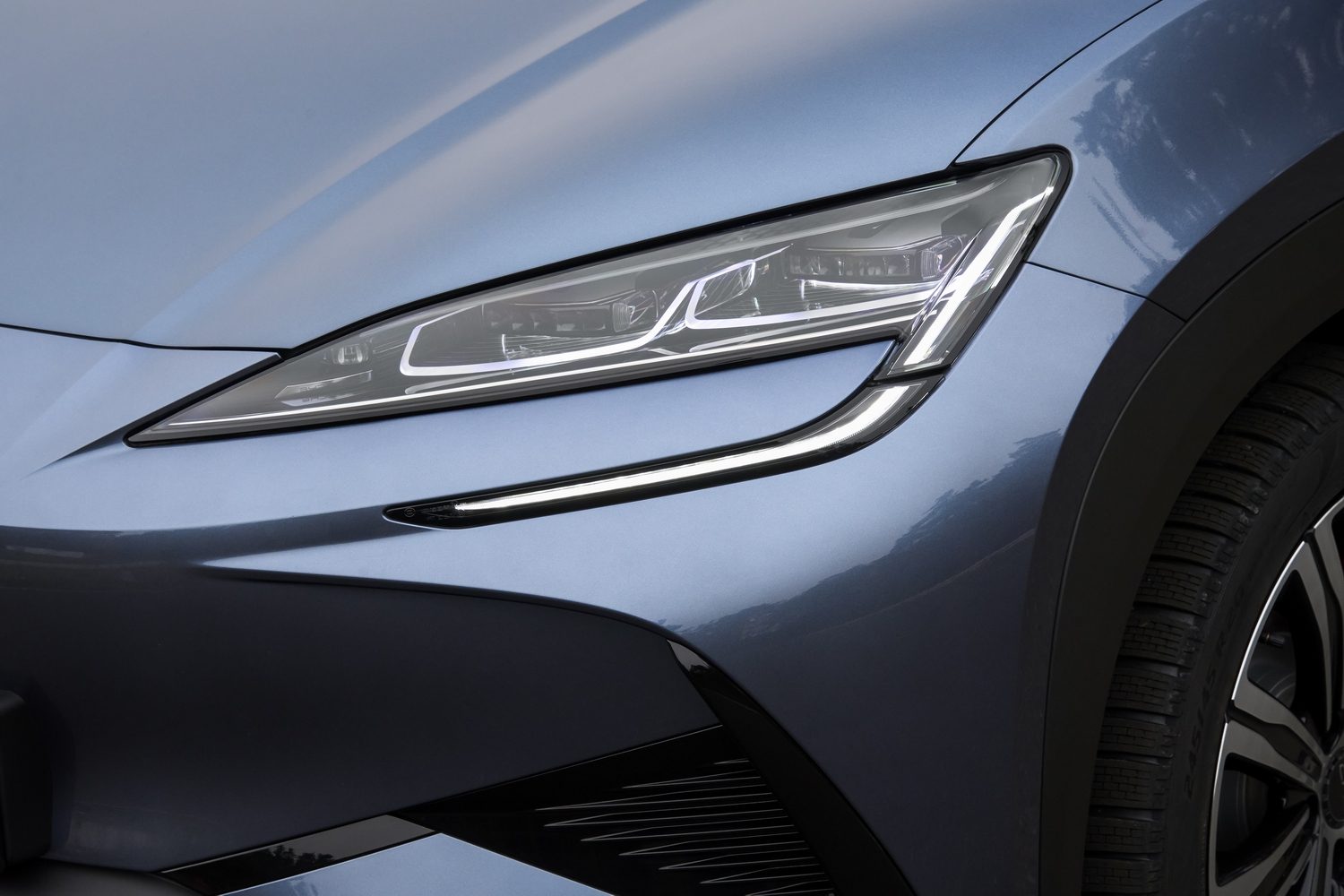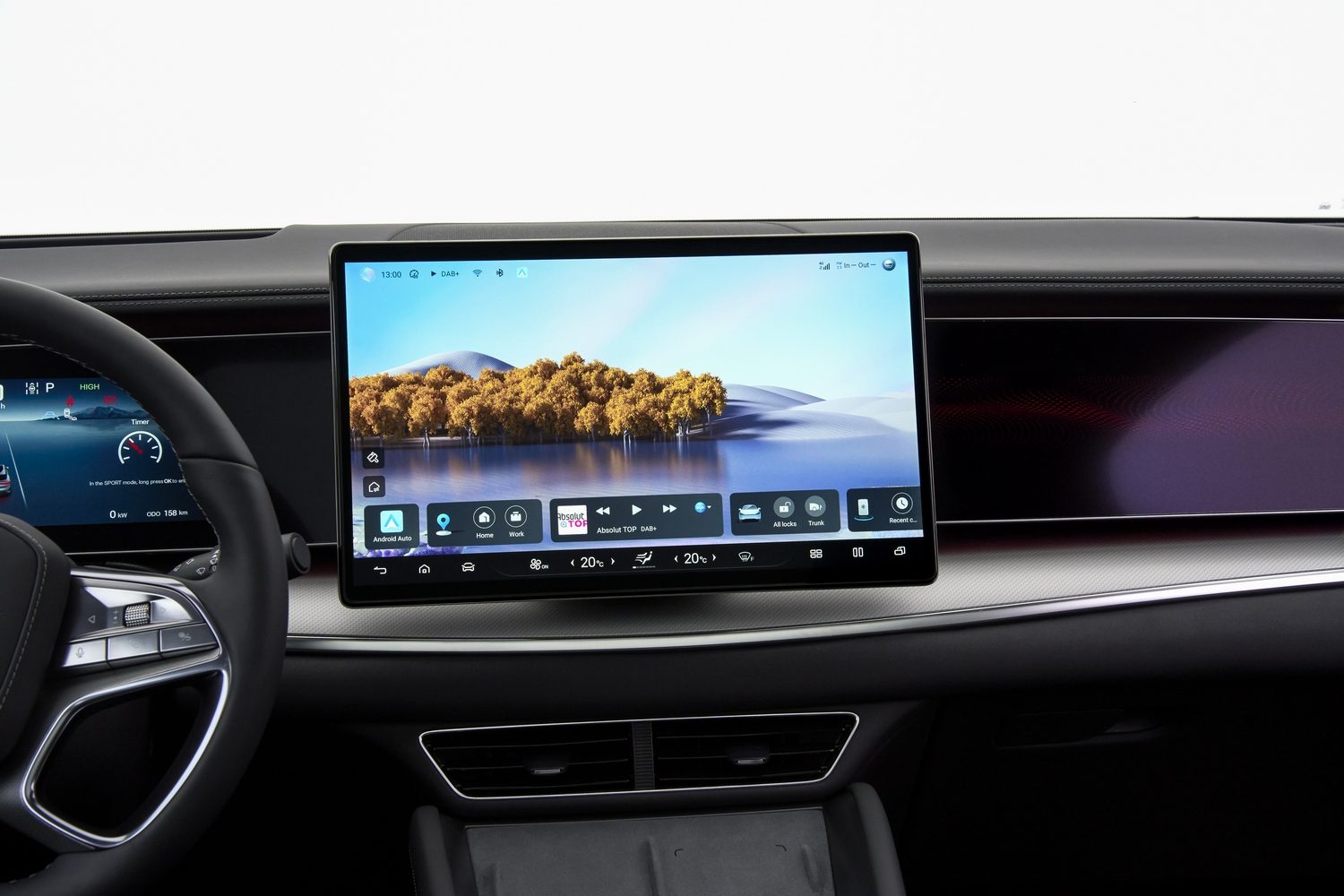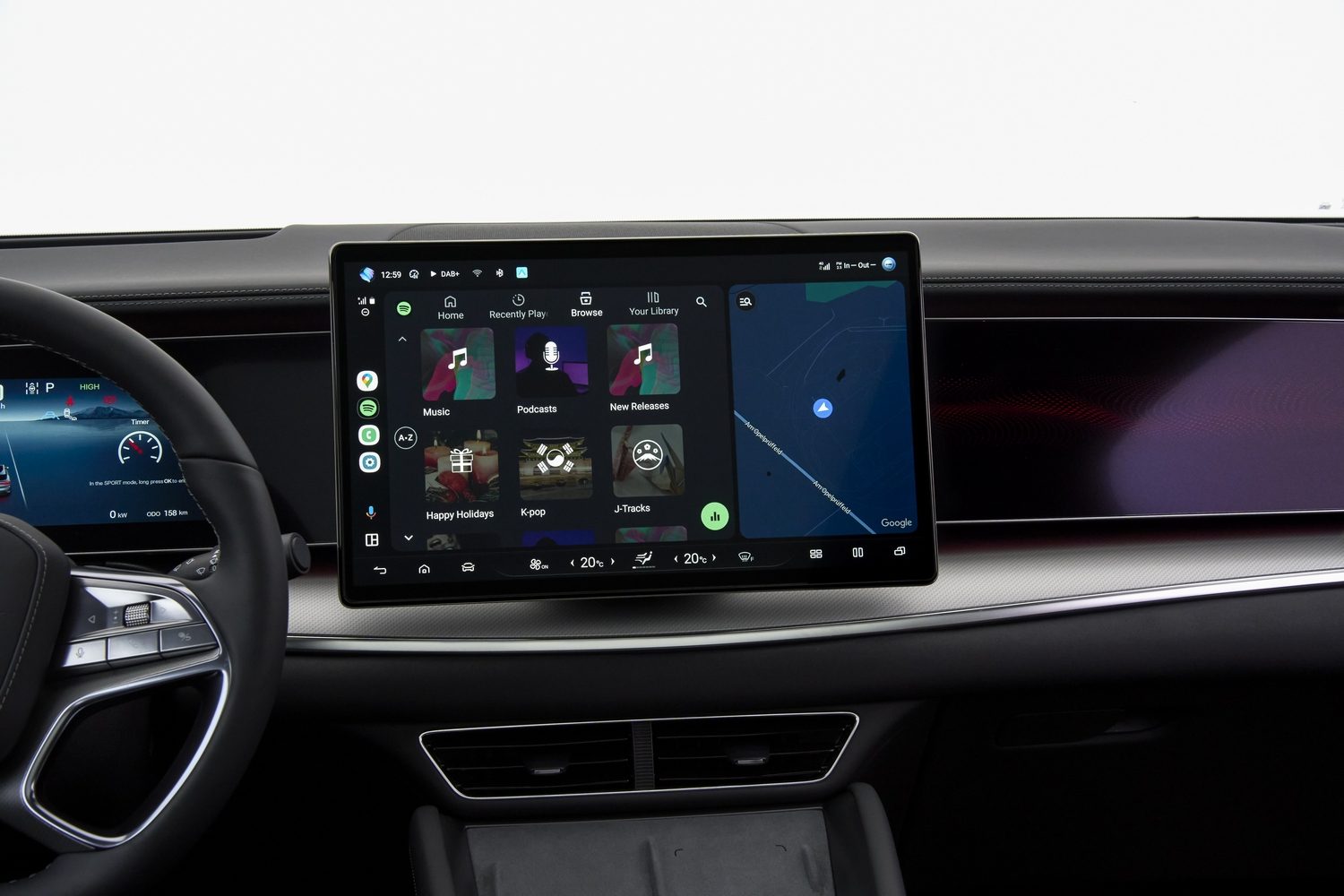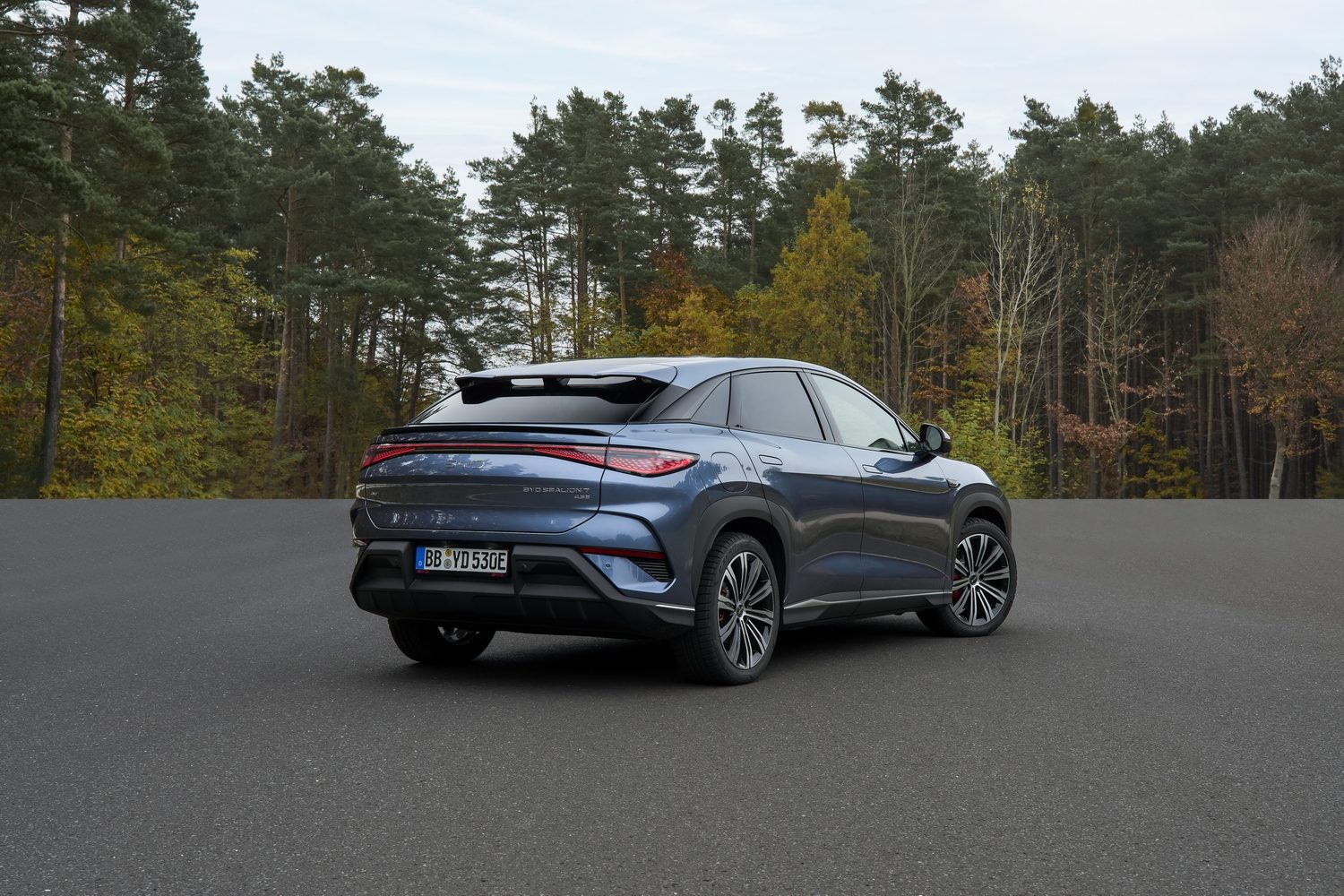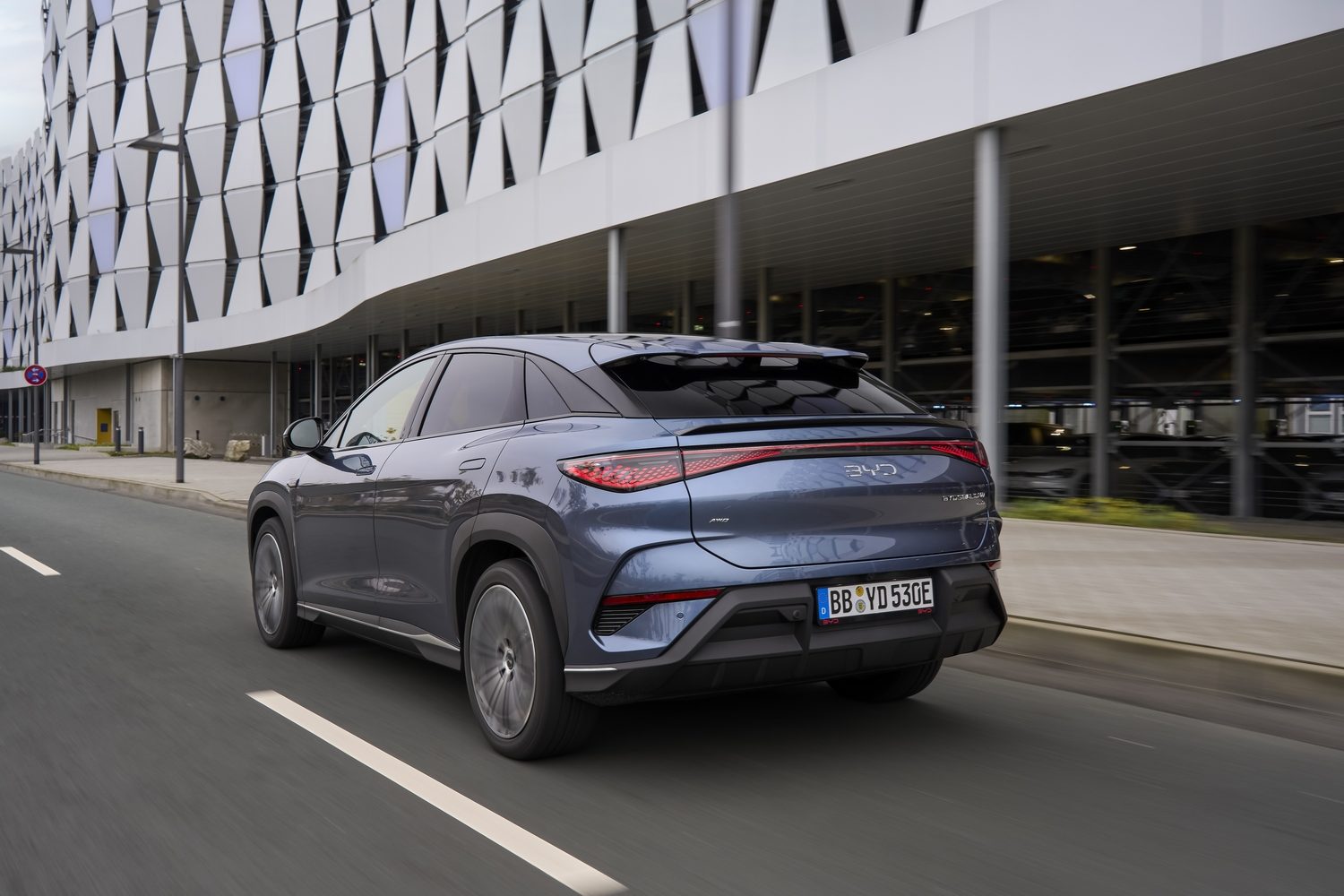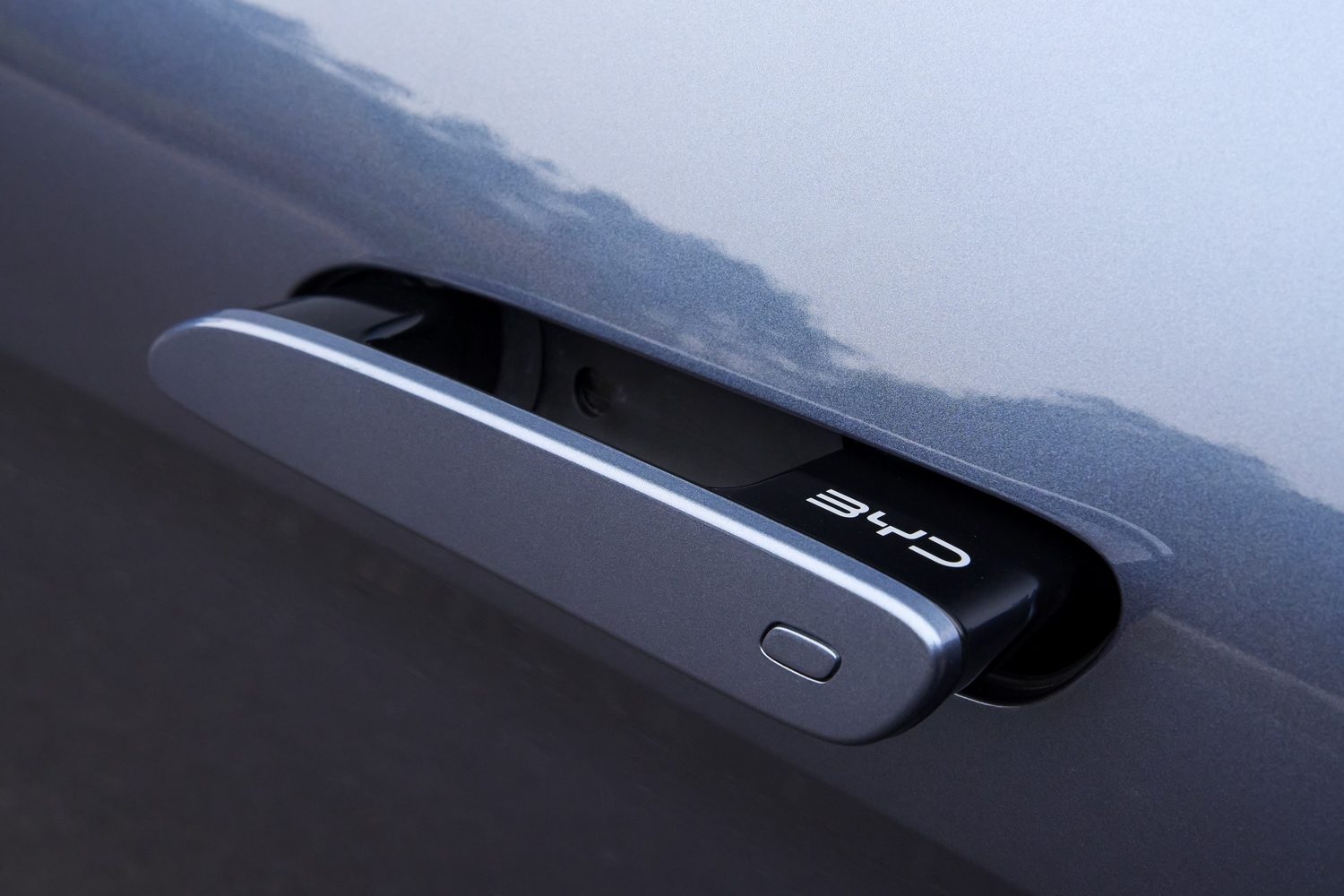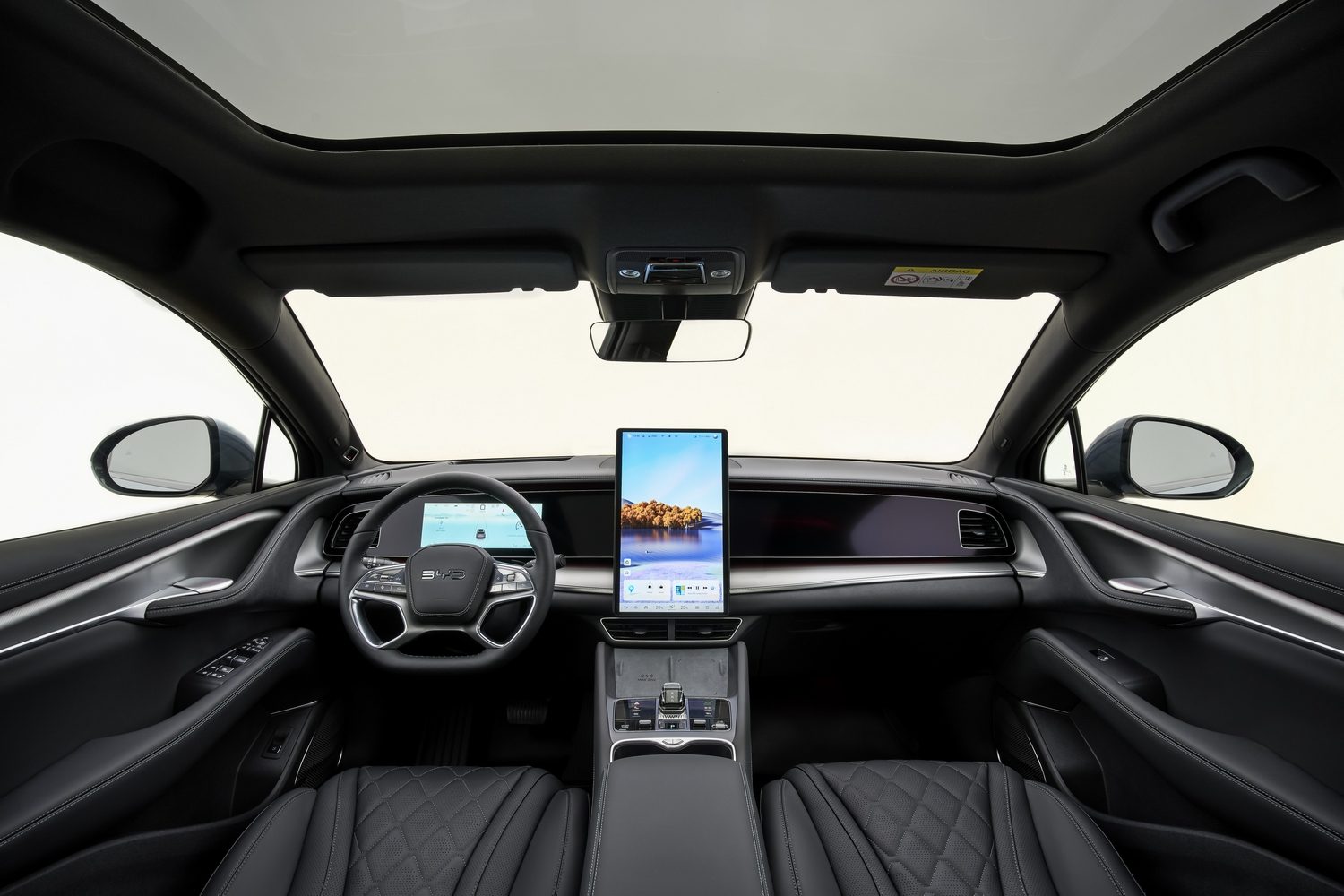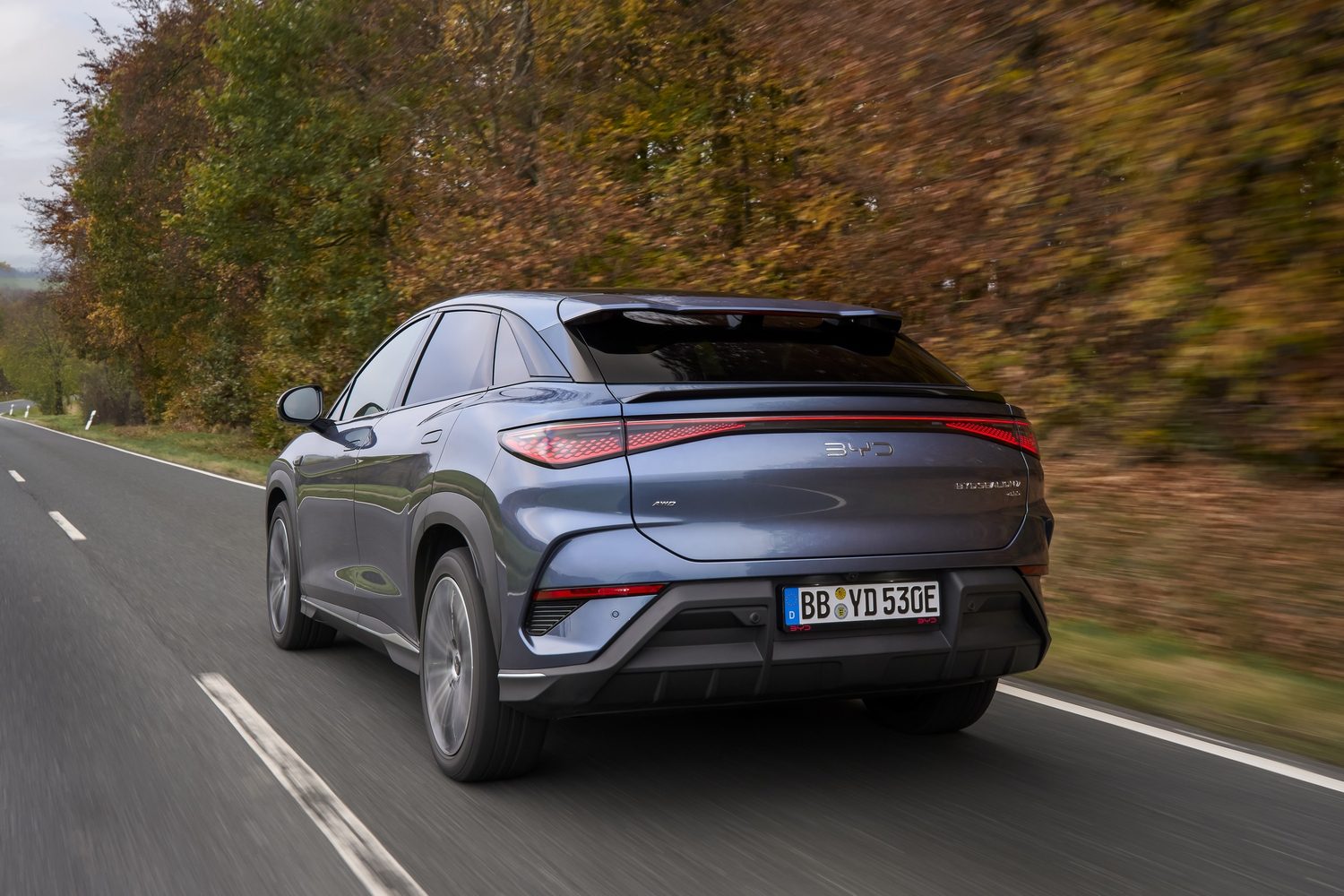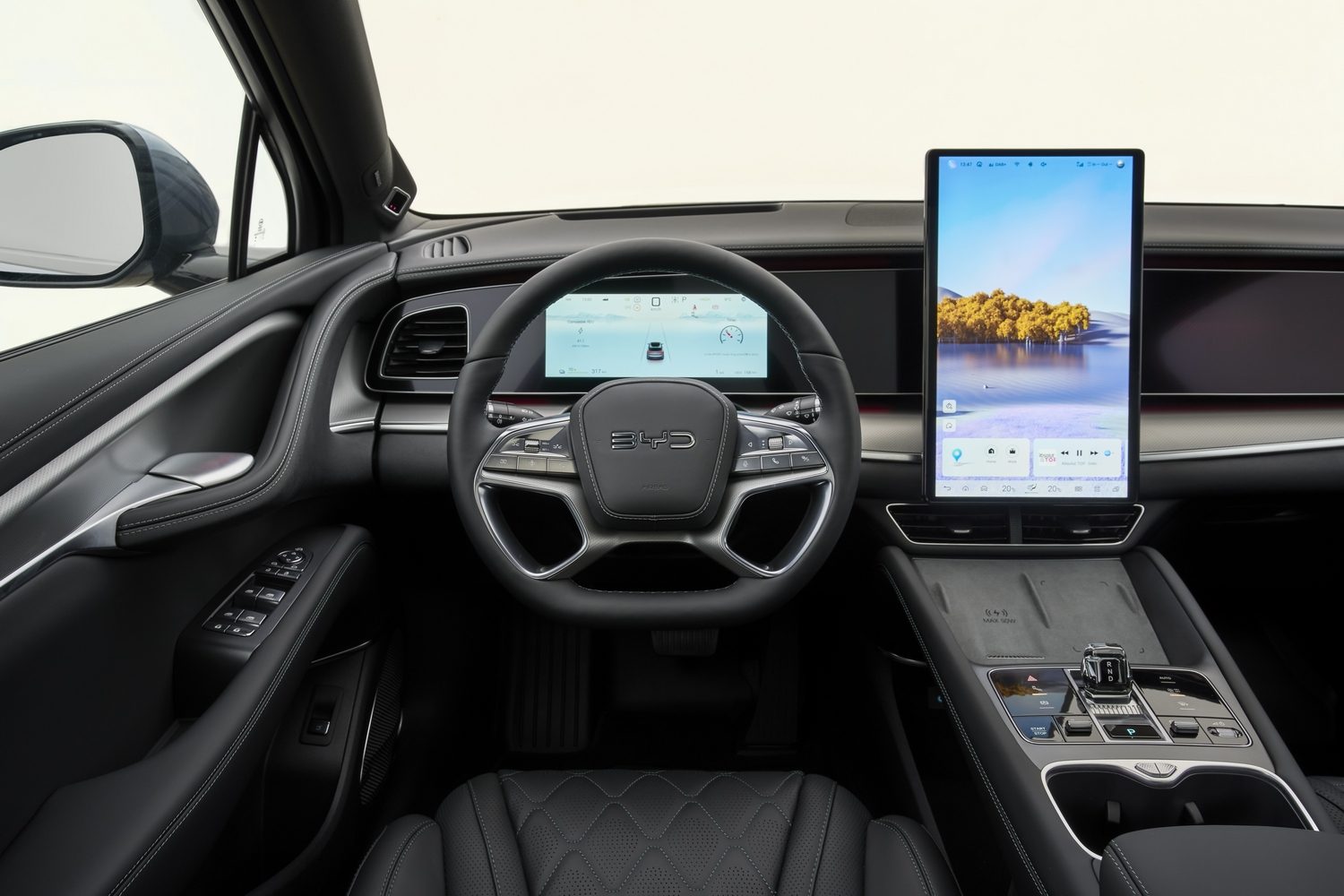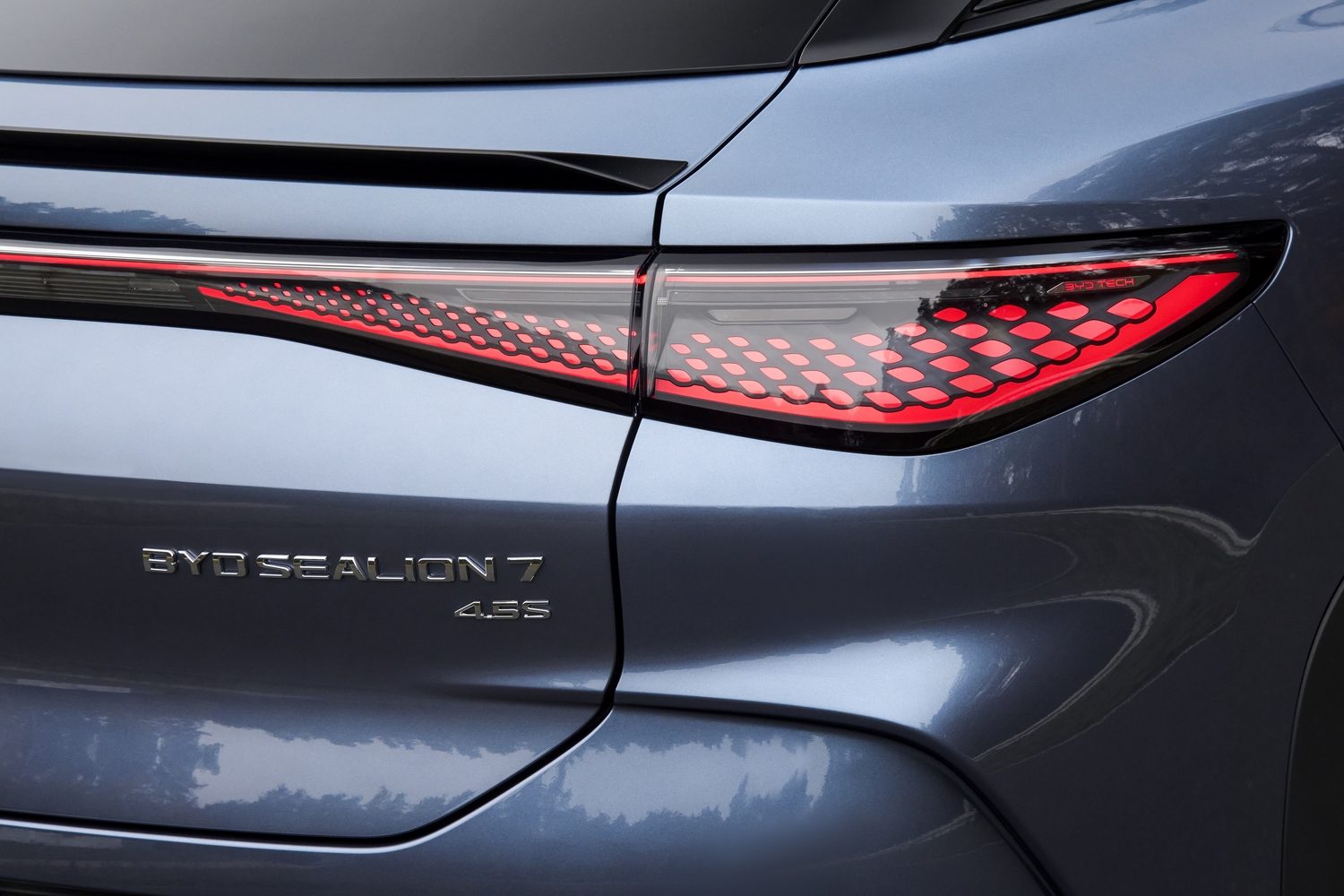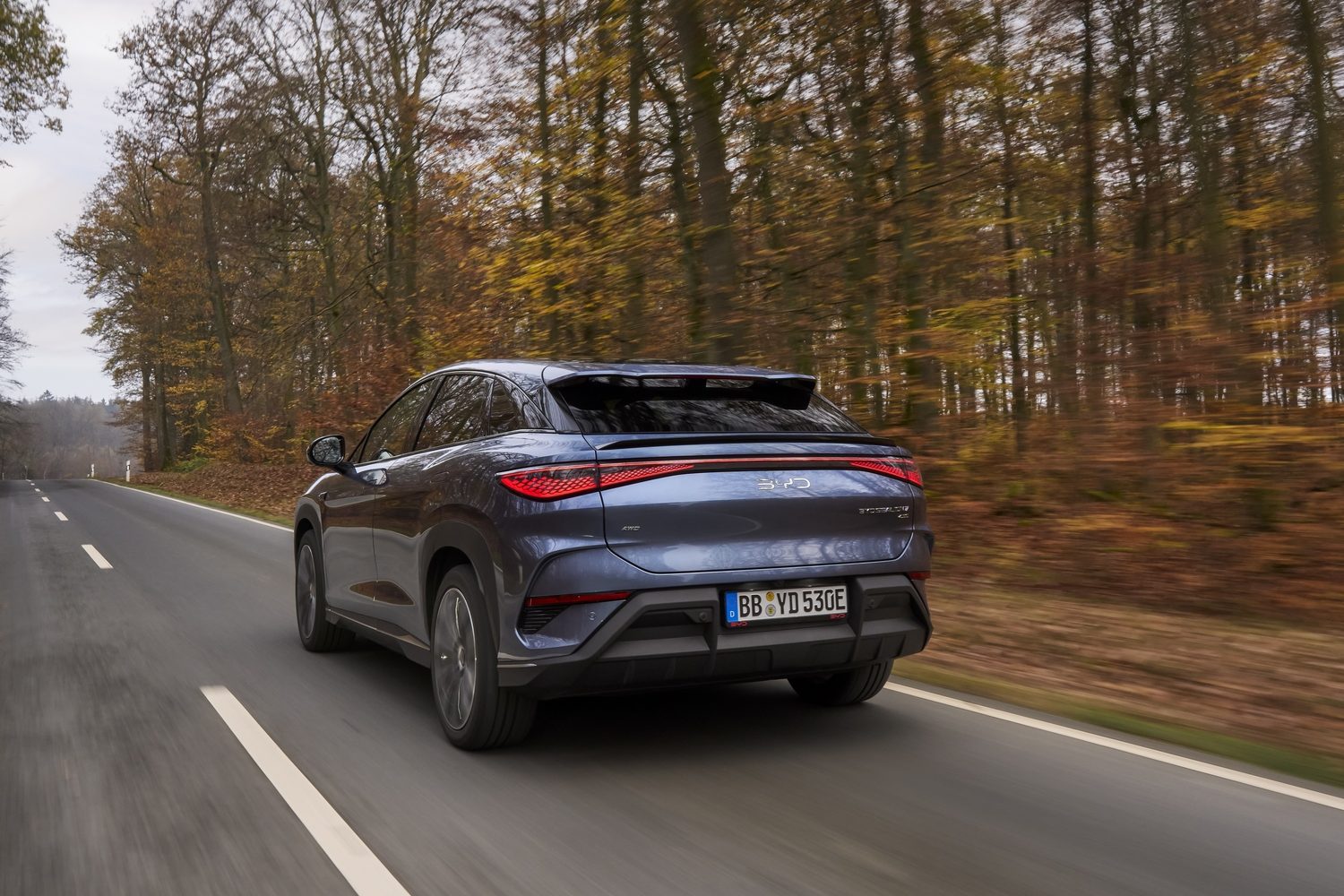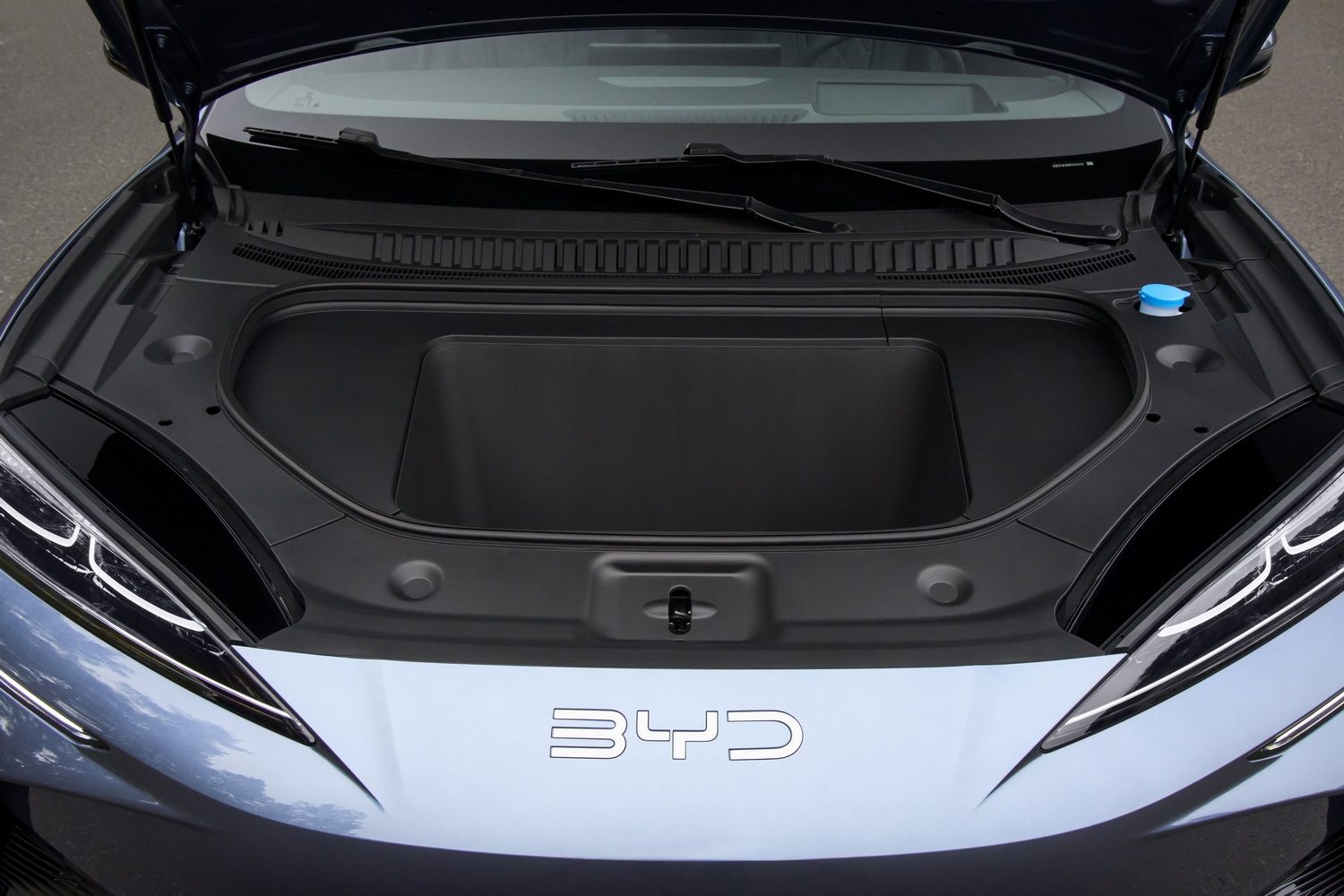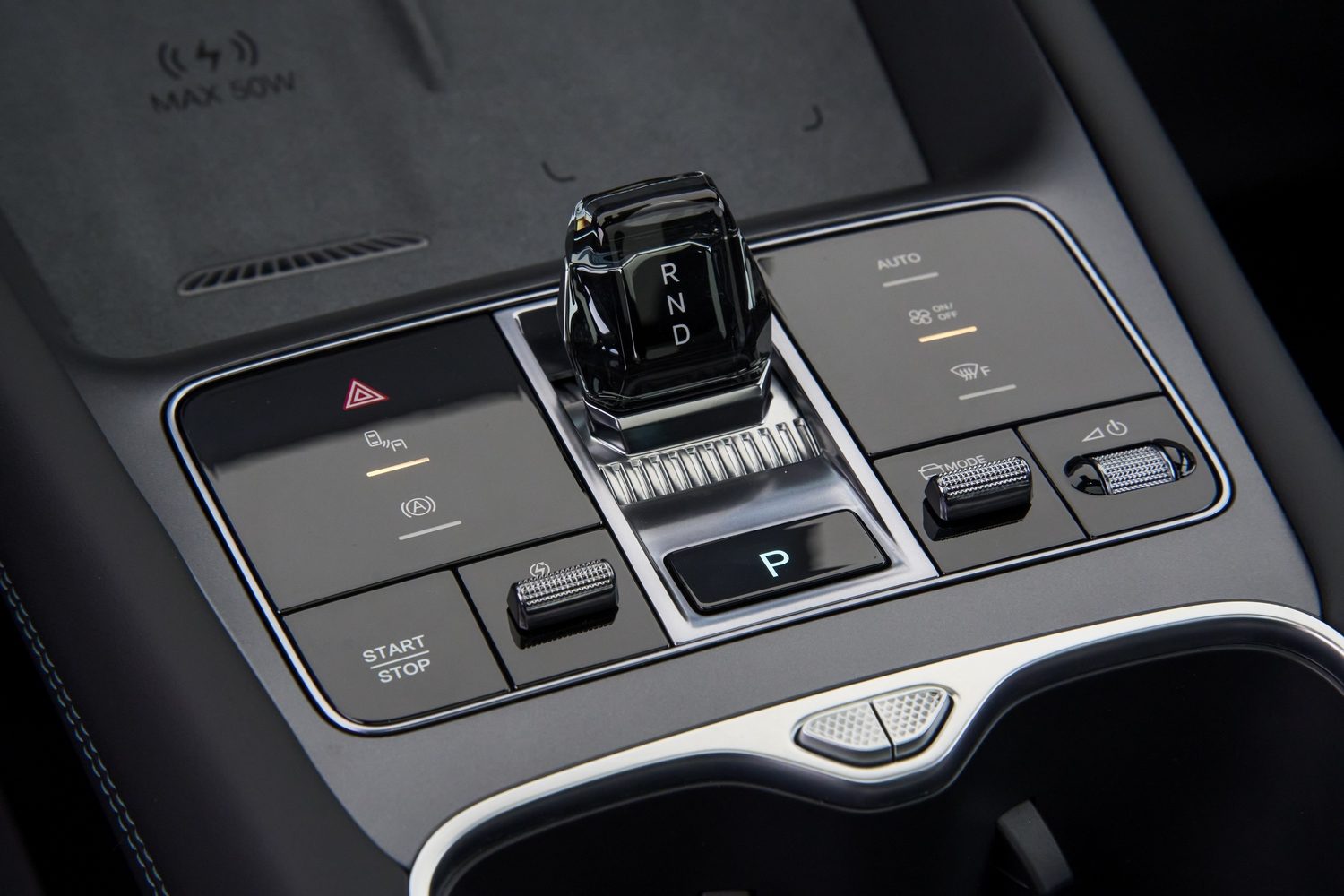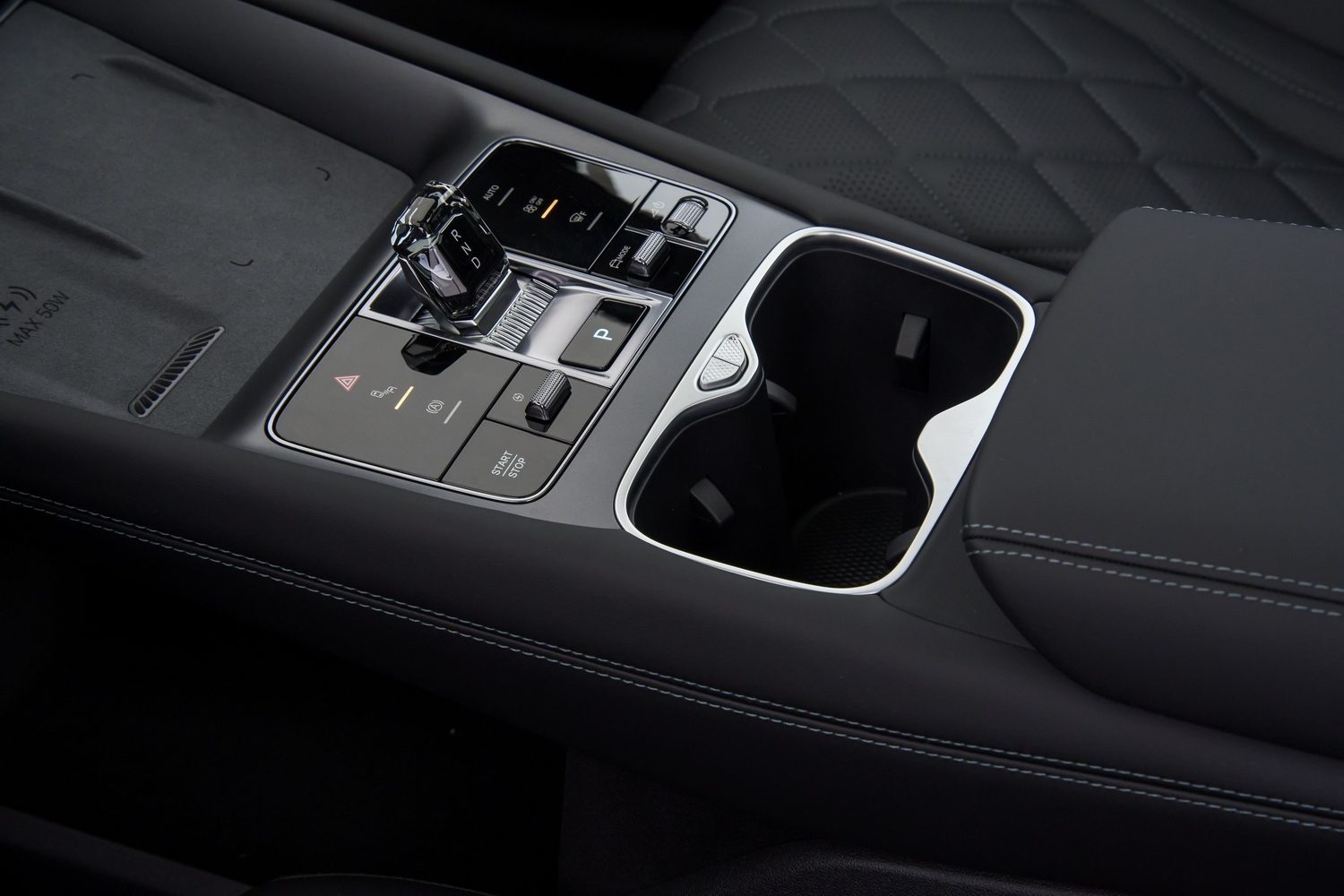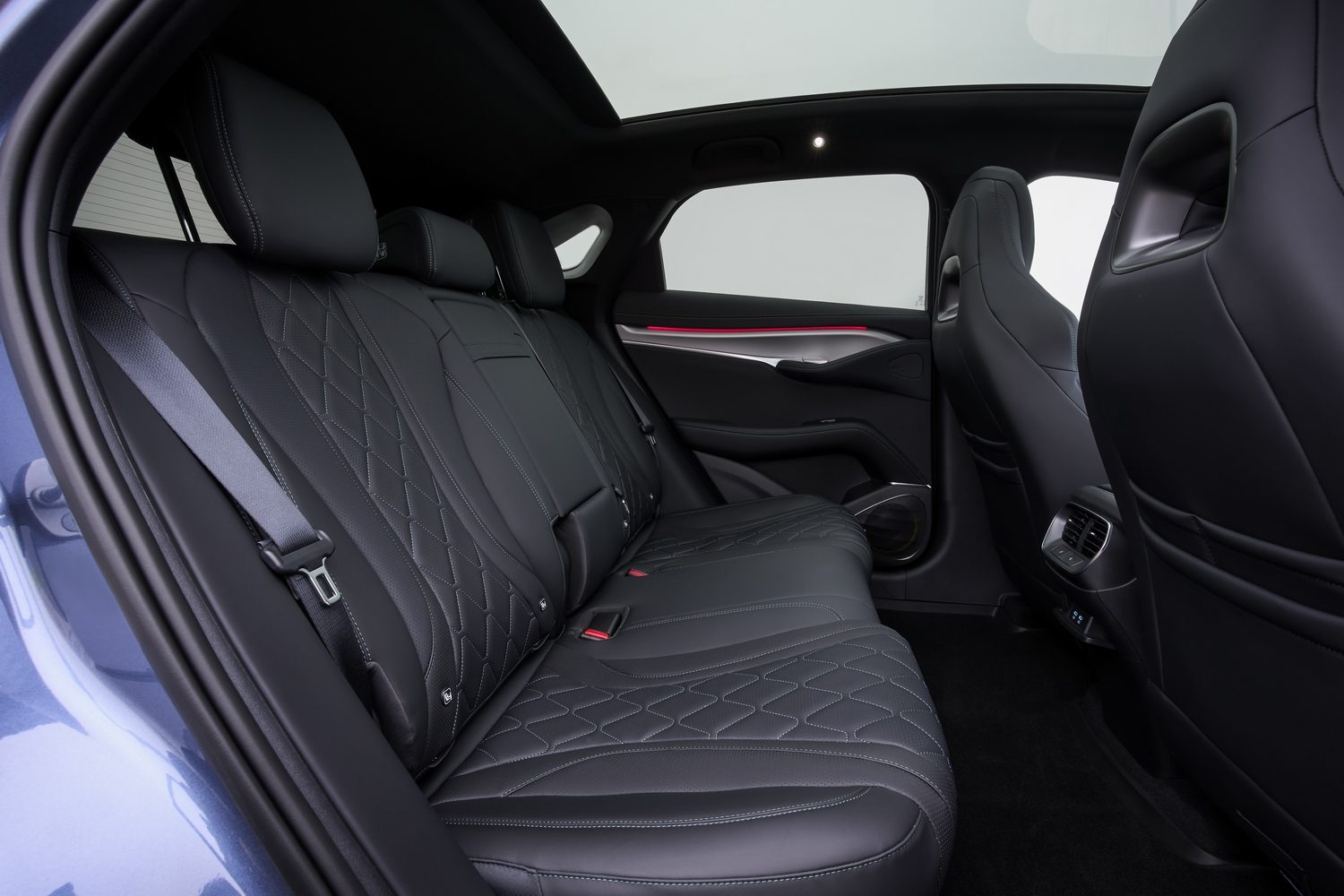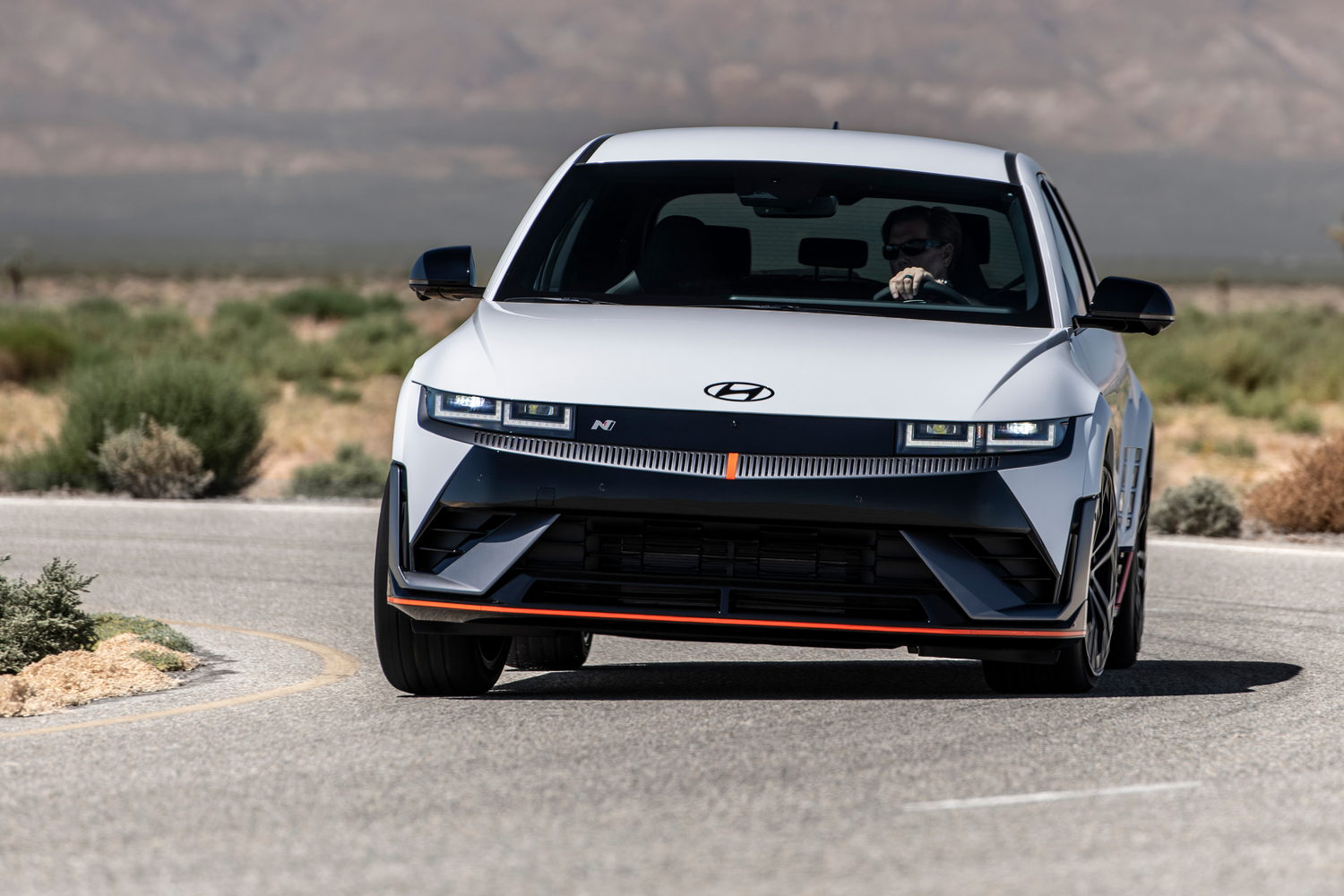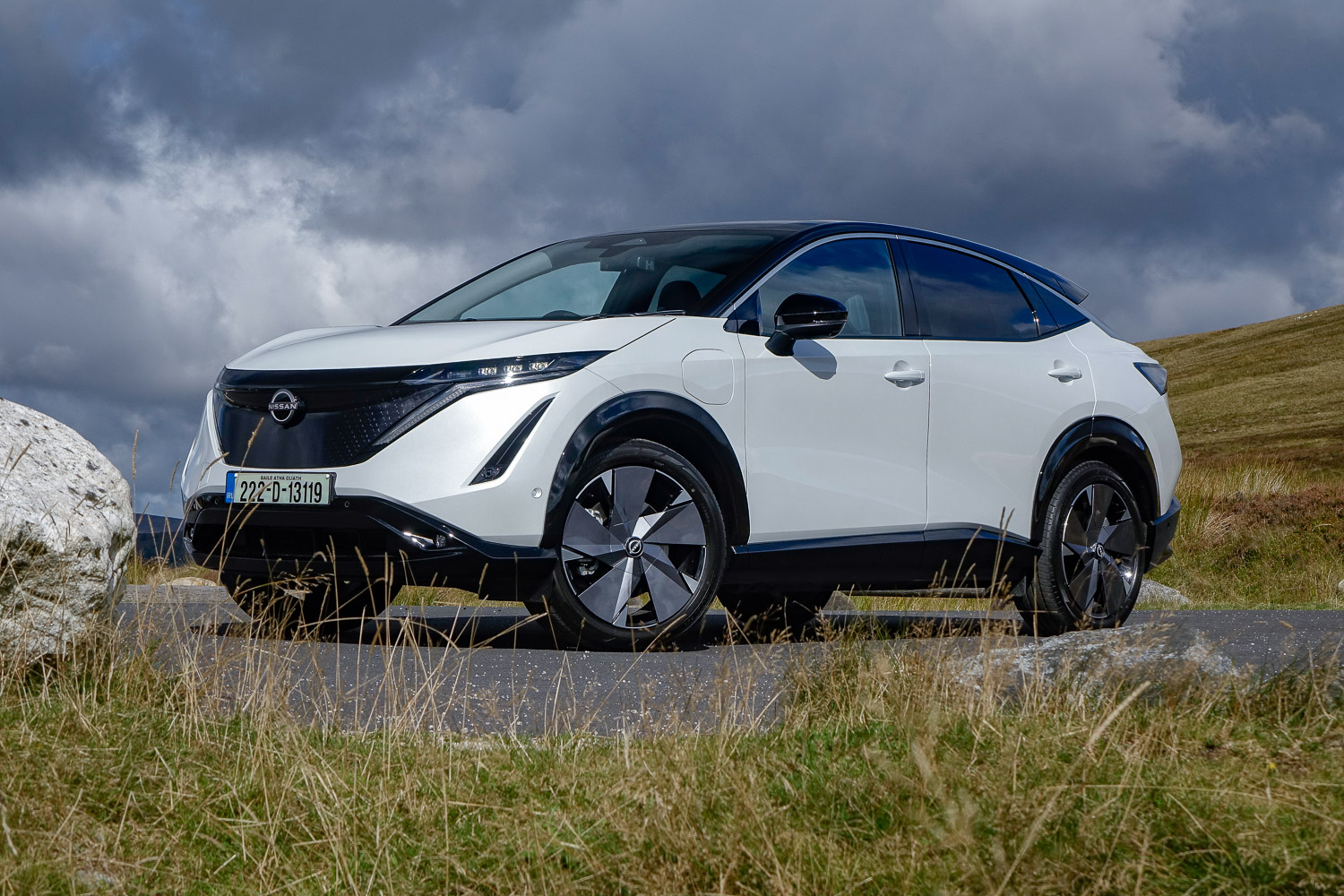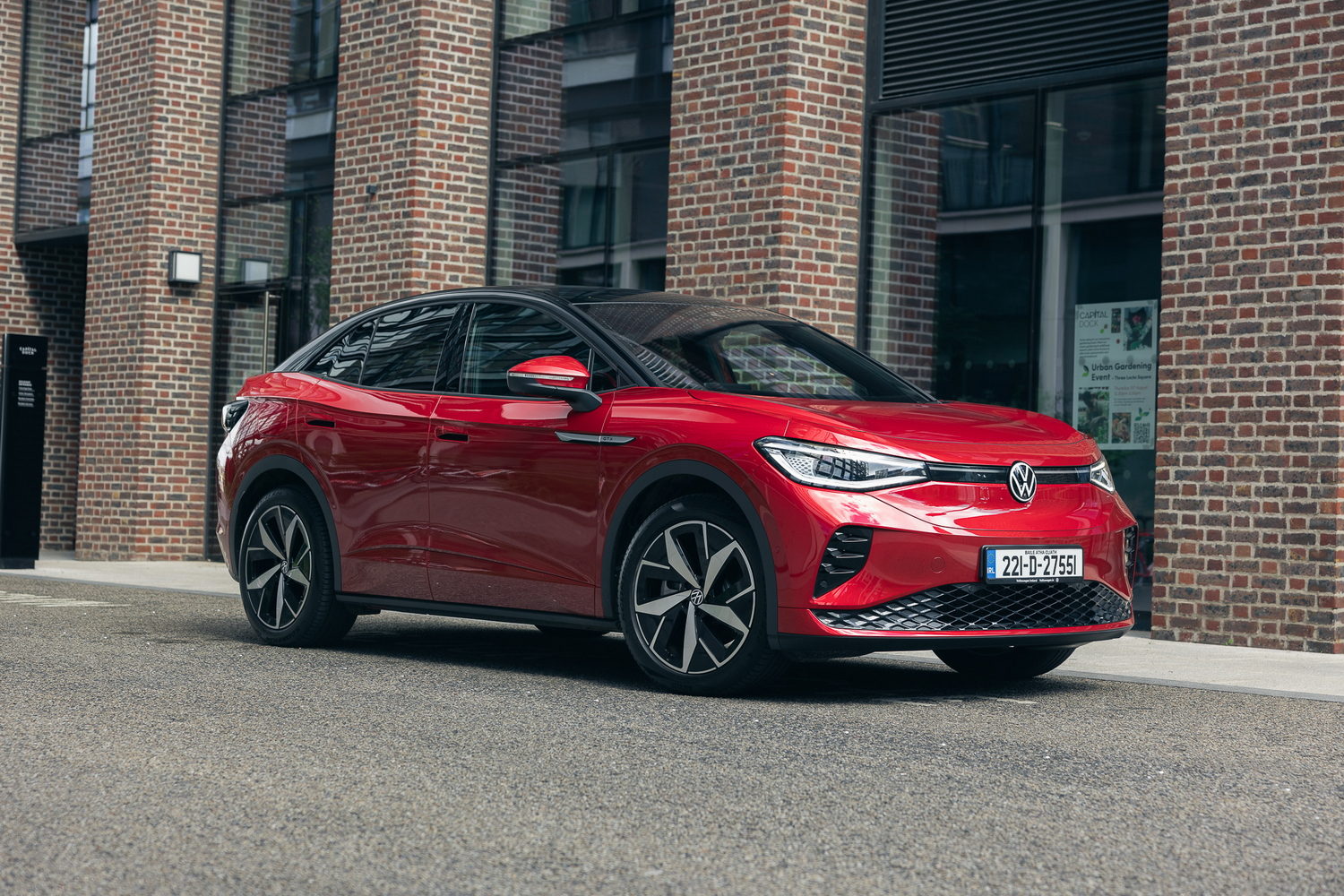No sooner has the BYD Seal U arrived on the market as a well-priced plug-in hybrid, but along comes a fully electric alternative from the same Chinese car maker with sportier looks and performance to match. The Sealion 7 is a mid-sized SUV with coupe-like styling akin to rivals such as the Volkswagen ID.5, the Ford Capri and the Tesla Model Y.
How big is the BYD Sealion 7?
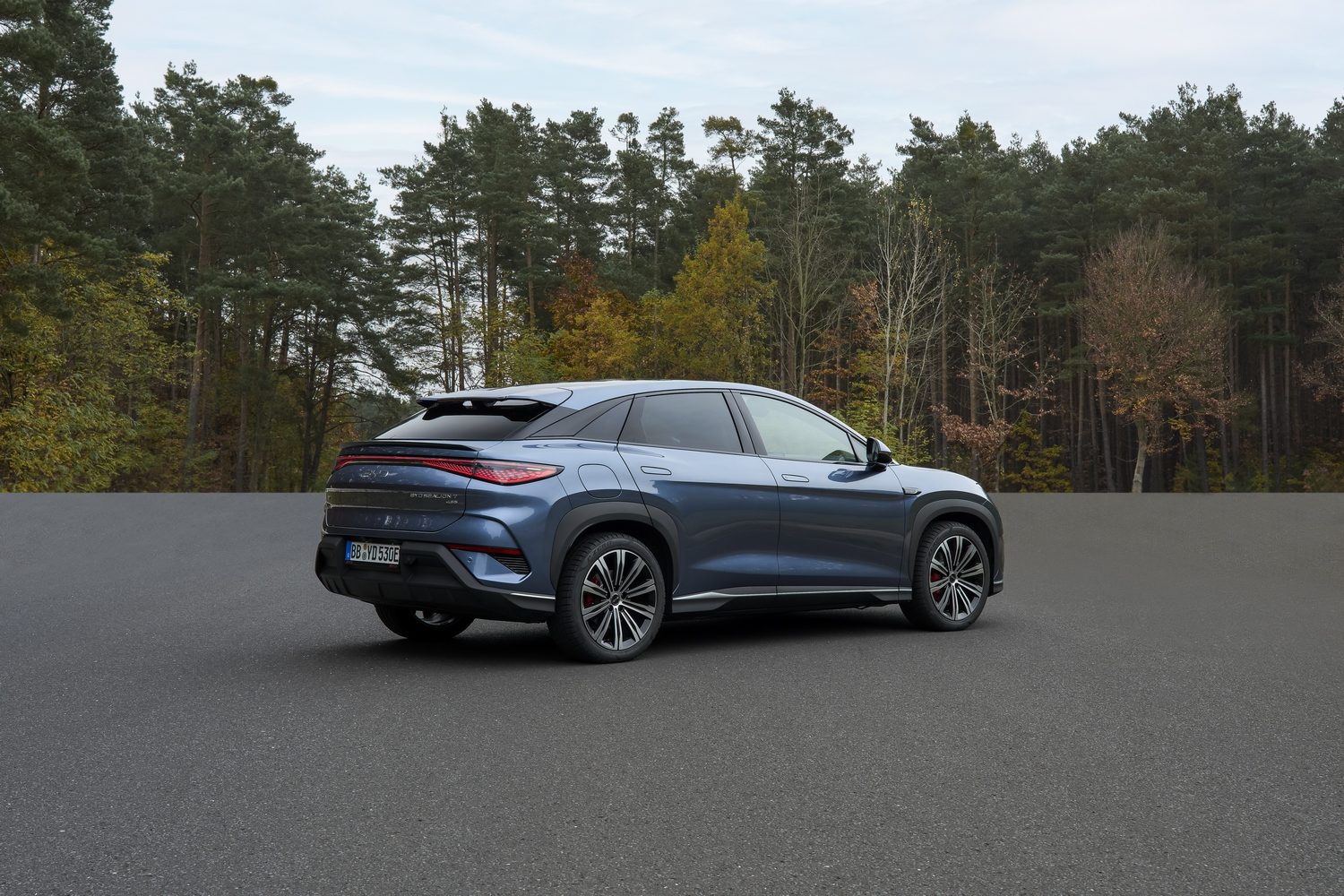
The Sealion 7 measures 4,830mm long and 2,189mm wide, which makes it bigger than the Volkswagen ID.5, Nissan Ariya and even the Tesla Model Y, so it's on the larger side of what's generally referred to as the mid-sized SUV segment. It also has plenty of boot space with 520 litres available with all seats in use, and as much as 1,789 litres when the 60:40 split-folding rear seats are folded forward.
The boot aperture is wide enough, and the load height isn't too tall, so getting bulkier items in and out shouldn't prove difficult, but there is a small lip to get over. A small underfloor compartment is handy for putting in the charging cable or perhaps some small items you want to keep hidden from view. Up front there are 58 litres of storage available in the 'frunk', which is deep enough to carry a small travel suitcase, though opening the bonnet is done via a lever placed under the dashboard.
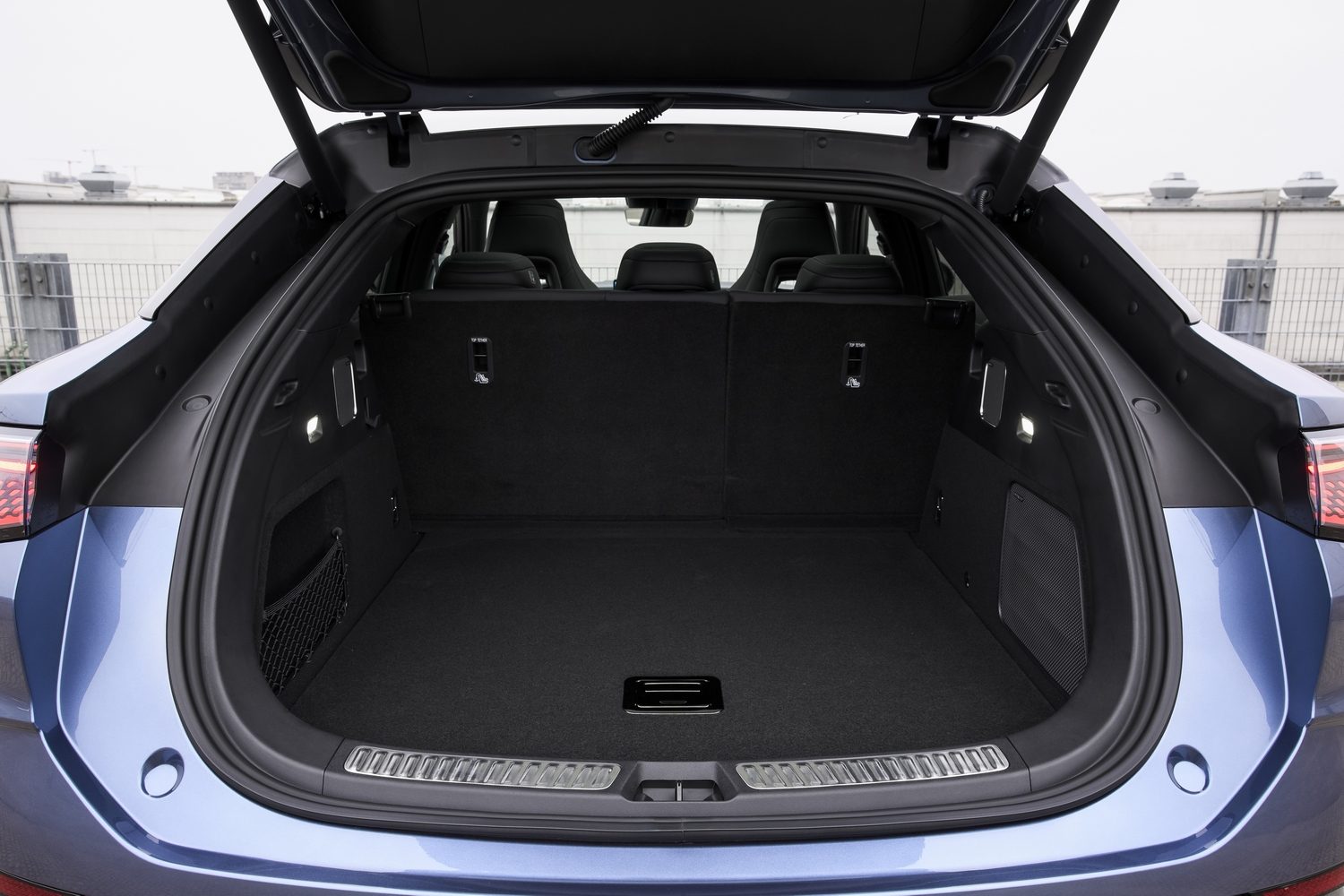
What versions of the BYD Sealion 7 are available?
There are three variants of the BYD Sealion 7 available, called Comfort, Design AWD and Excellence AWD, and it's the latter that we're reviewing here. The Sealion 7 Comfort uses an 82.5kWh lithium iron phosphate (LFP) Blade battery and a single electric motor producing up to 312hp and 380Nm that drives the front wheels. This version has a driving range of 482 kilometres (WLTP combined) and has 11kW AC and 150kW DC peak charging rates.
In the middle of the lineup is the Sealion 7 Design AWD, which uses the same 82.5kWh battery and electric motor on the front but has an additional motor for the rear axle to boost maximum outputs to 530hp and 690Nm. The extra weight and performance mean that the combined WLTP driving range drops slightly to 456 kilometres, though it retains the same 11kW AC and 150kW DC peak charging rates.
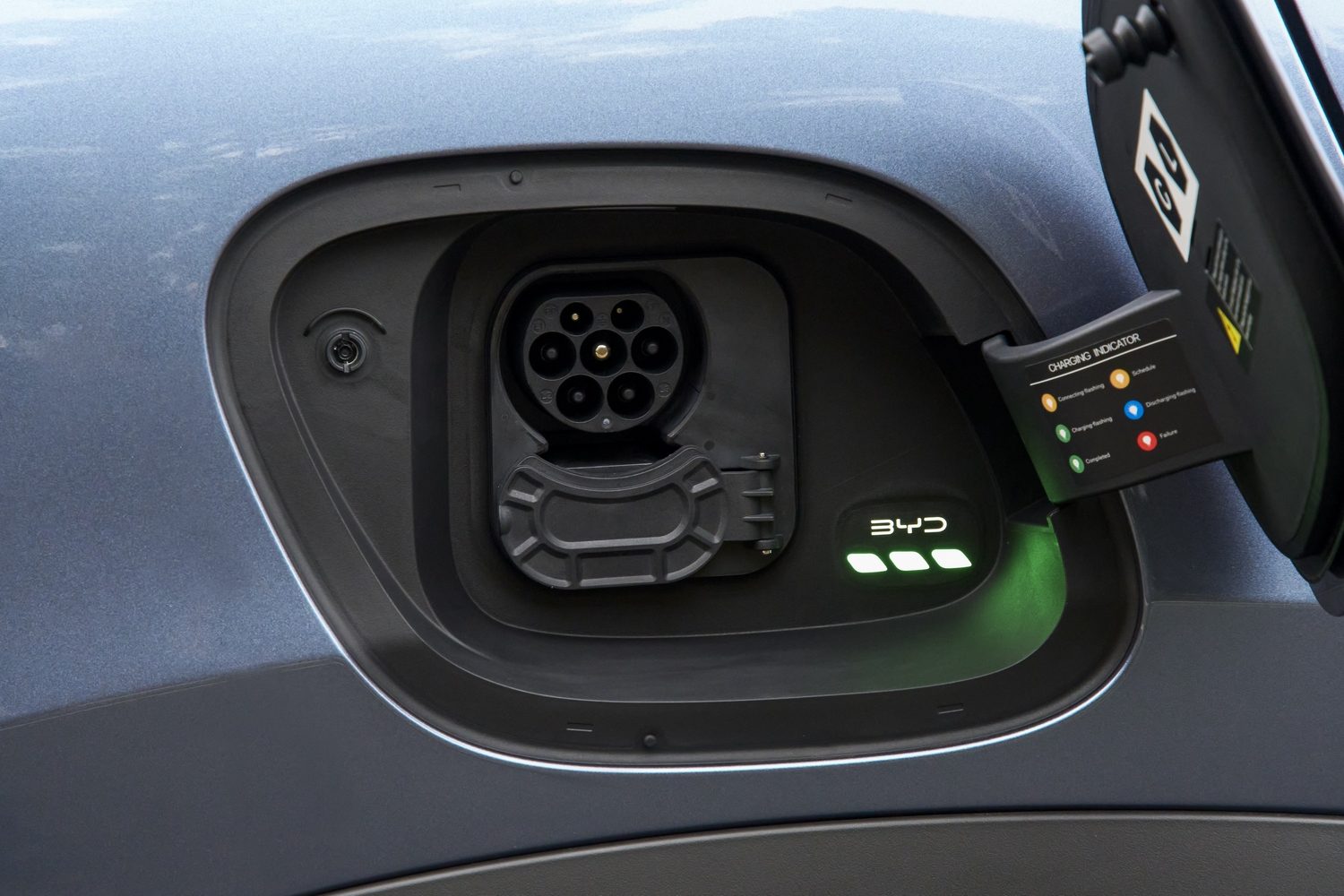
Topping the offering is the Sealion 7 Excellence AWD, which has the same power and torque outputs as the Design AWD but gets a higher capacity 91.3kWh battery that extends the WLTP combined driving range to 502 kilometres. At the same time, it also gets a bump in peak DC charging speed, to 230kW, resulting in a 10-80 per cent recharge in just 24 minutes versus the 32 minutes quoted to do the same in the Comfort and Design AWD models.
Standard equipment levels across the Sealion 7 range are very good, with only a handful of items, such as Nappa leather upholstery and a colour head-up display, differentiating the Excellence AWD from the other two variants.
What's the interior of the BYD Sealion 7 like?
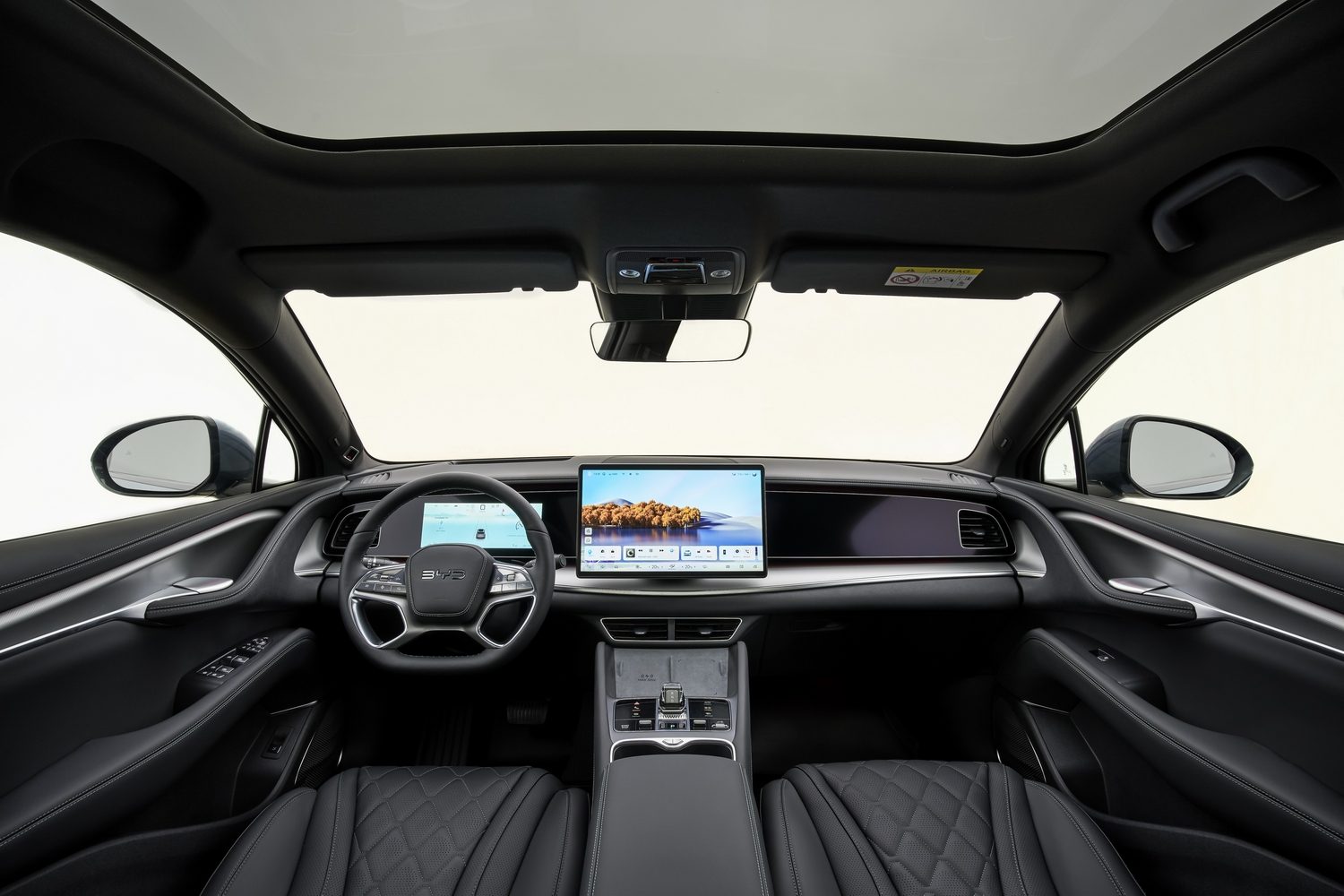
The look and layout of the Sealion 7's cabin is similar to those of the other models in the BYD range, and generally the overall quality is good. Go searching and you will find some harder, cheaper feeling plastics, but for the most part it's on a par with many of its direct rivals. Our test car was equipped with the Nappa leather upholstery, while Comfort and Design AWD versions get an artificial leather instead. The front seats are electrically adjustable, heated and ventilated, and the steering wheel can be manually adjusted for reach and rake, so finding a comfortable driving position won't be challenging for most people.
A four-spoke multifunction steering wheel has a flat-bottomed design and uses physical buttons with a metallic finish. Behind that is a 10.25-inch digital display with all the relevant driving information and, in the case of this Excellence AWD version, a colour head-up display as standard. This is the only version to get that HUD. The 15.6-inch touchscreen is rotatable through 90 degrees, providing the choice of landscape or portrait orientation, though you have to use the former when running the wireless Android Auto or Apple CarPlay smartphone mirroring functions. The native infotainment system is better than in previous BYDs we've tried, with an improved menu layout, nicer graphics and even faster response times to inputs thanks to a more powerful chip set inside.
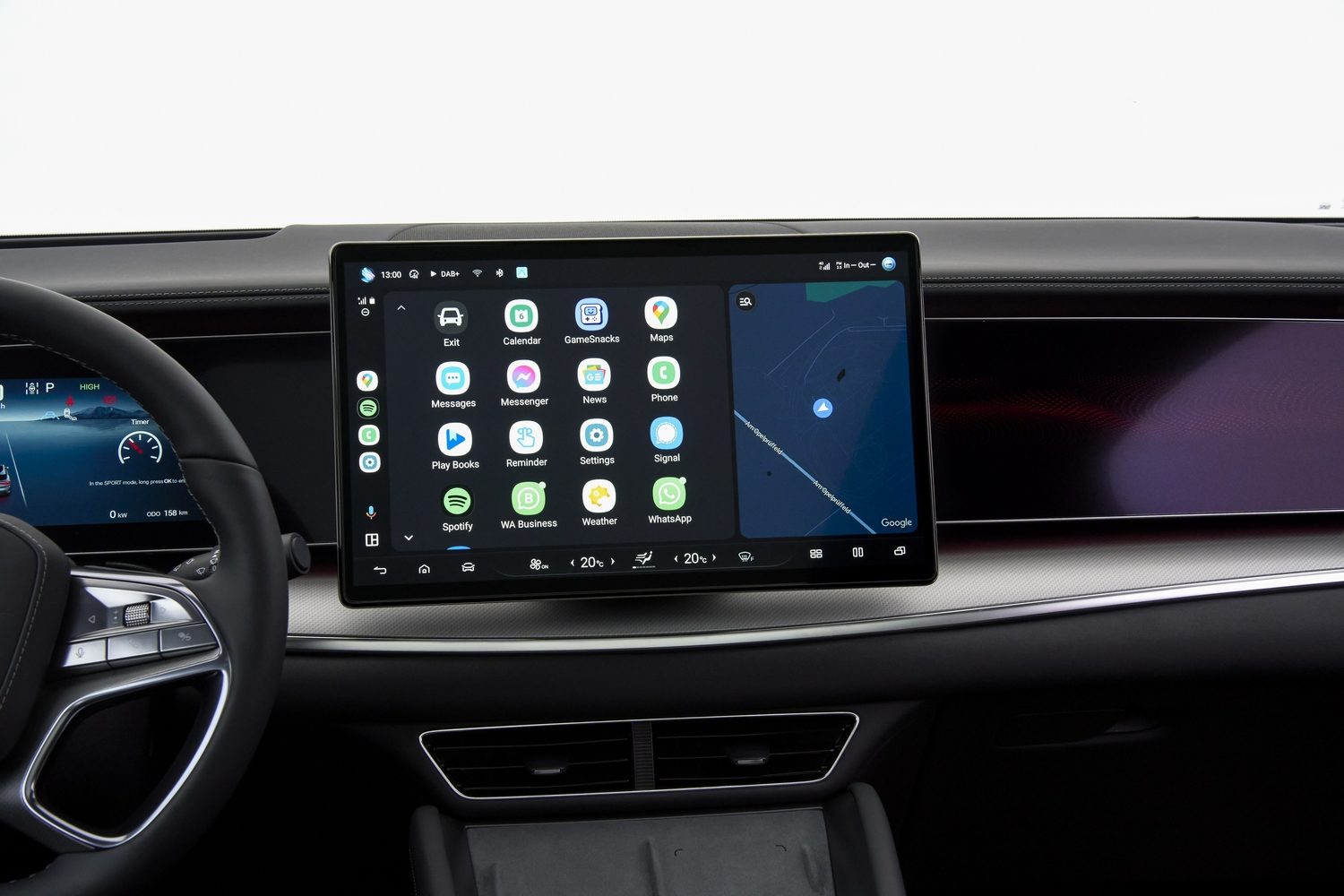
The centre console includes a 50W wireless charging pad, and a control panel that houses the stubby crystal-effect drive selector and buttons for starting up, drive modes and volume control. A variable height cupholder set is useful and there's a deep storage bin underneath the central armrest as well. Below the centre console is an additional open stowage area that's suitable for a small handbag or other oddments, and in there you'll also find two USB-C ports.
Those in the rear are treated well too, with generous amounts of legroom and headroom, with the latter helped further by a manually reclining seat back. The two outer rear seats are quite comfortable and can be heated. They also feature ISOFIX mounting points for child seats.
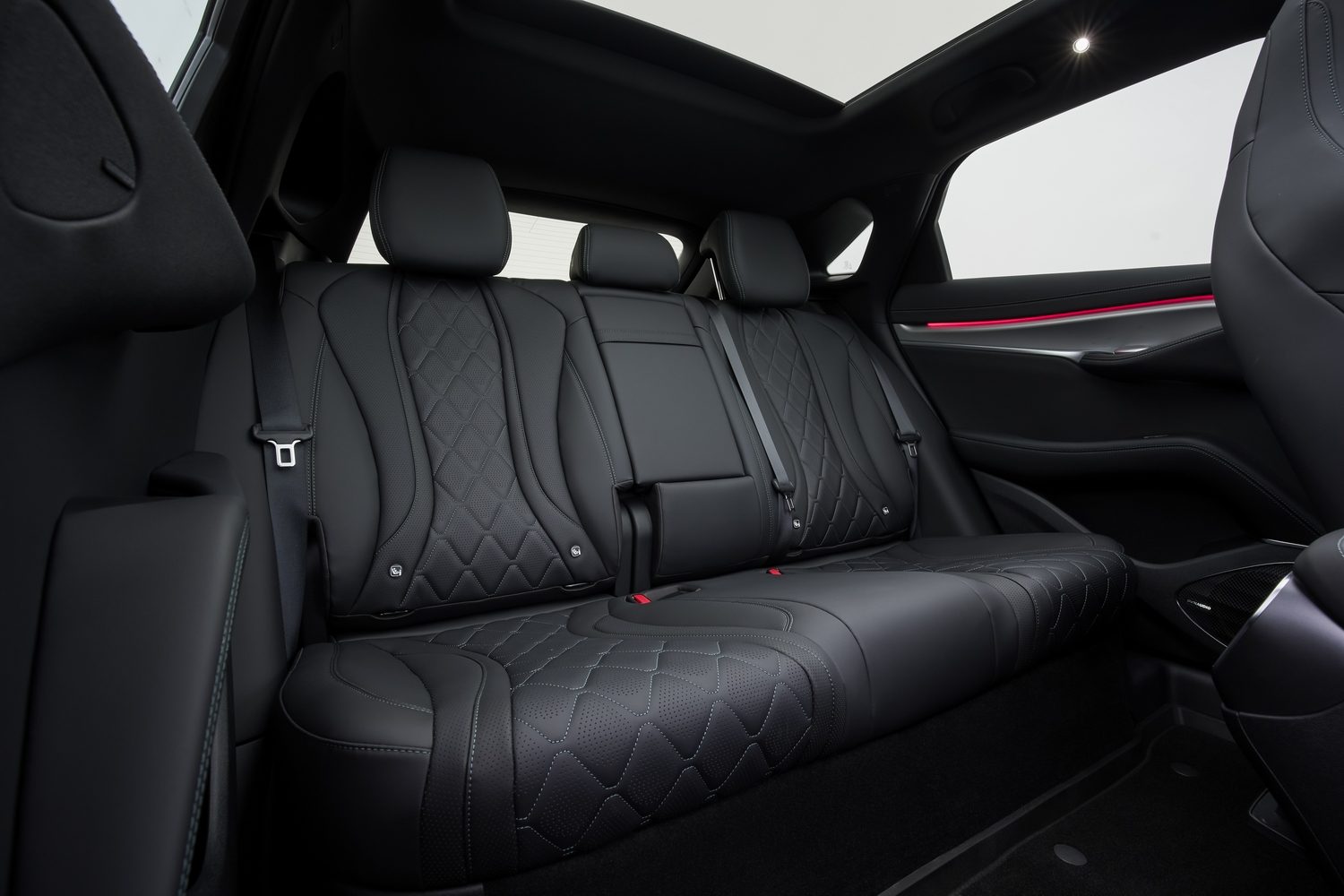
The middle seat isn't as comfortable but is relatively wide, and along with the flat floor, makes it more usable than in many cars. If this isn't in use, the backrest can fold down to provide an armrest, two cupholders and a small stowage tray. Two more USB-C ports in the rear mean those in the back can keep their devices topped up, and the backs of the front seats contain three pockets for putting assorted items into.
Driving the BYD Sealion 7
As mentioned, we've only had the opportunity to drive the BYD Sealion 7 in its range-topping Excellence AWD guise, but the only real difference between it and the other AWD version is that the larger battery and extra equipment adds 95kg of weight. Regardless, the first thing many will notice when driving the Sealion 7 for the first time is its performance.
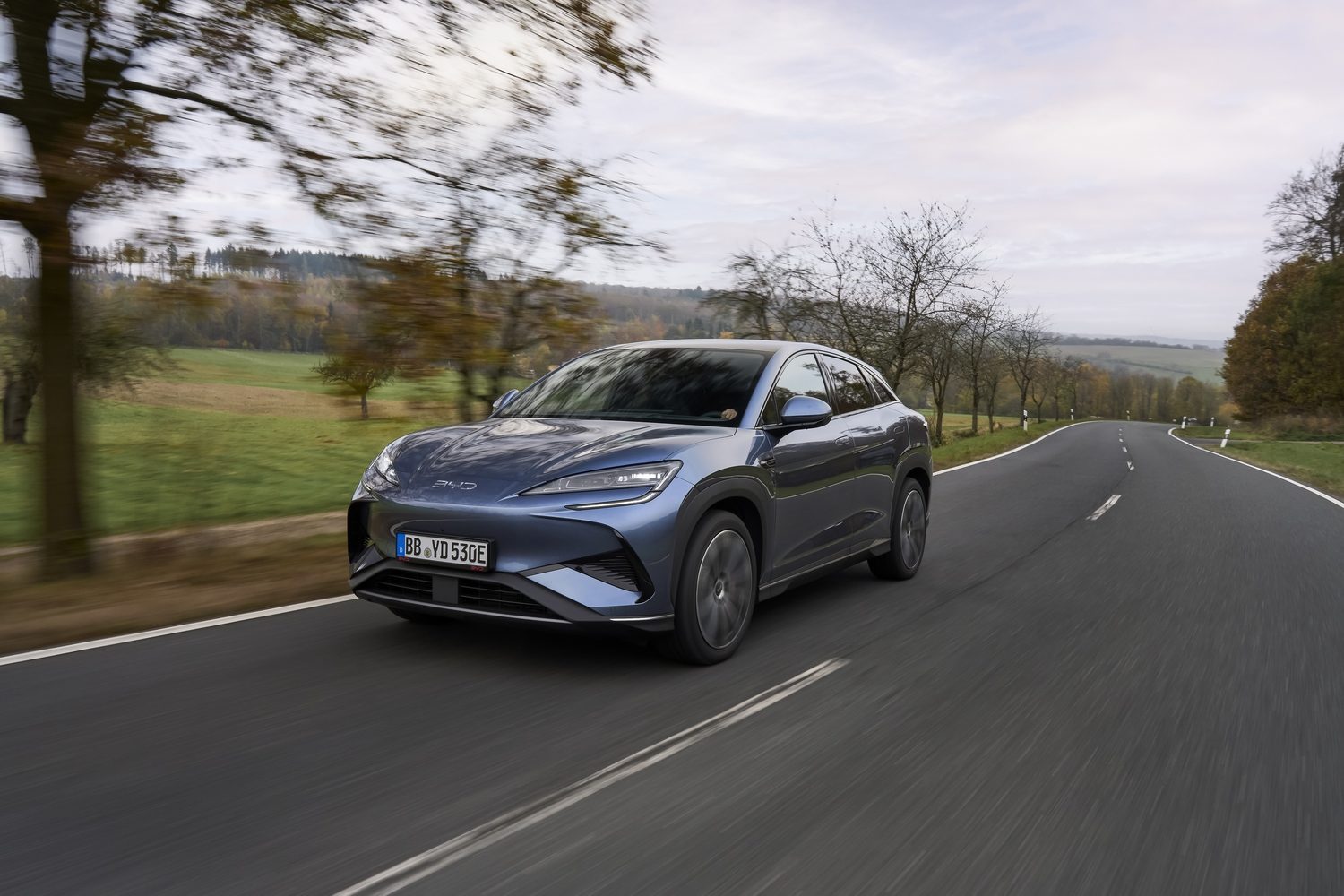
The dual-motor setup produces up to 530hp and 690Nm, making it extremely fast should you decide to use all of its ability. In fact, this version of the Sealion 7 has a '4.5s' badge on the boot lid to denote the amount of time it takes to accelerate from 0-100km/h. Not everybody is going to see the value in having so much performance in an SUV, but it seems we're still living in some kind of performance arms race in the EV world.
Of course, that power is only there should you go looking for it, and in everyday driving the Sealion 7 is as docile and smooth as you like when it comes to power delivery, especially if you don't stray away from the default Normal driving mode.
The Sealion 7 does have a sporty undertone to it, not only in terms of its looks but also in how it drives, and that's most evident in the ride quality. BYD equips all versions with a semi-active Frequency Variable Damping suspension setup.
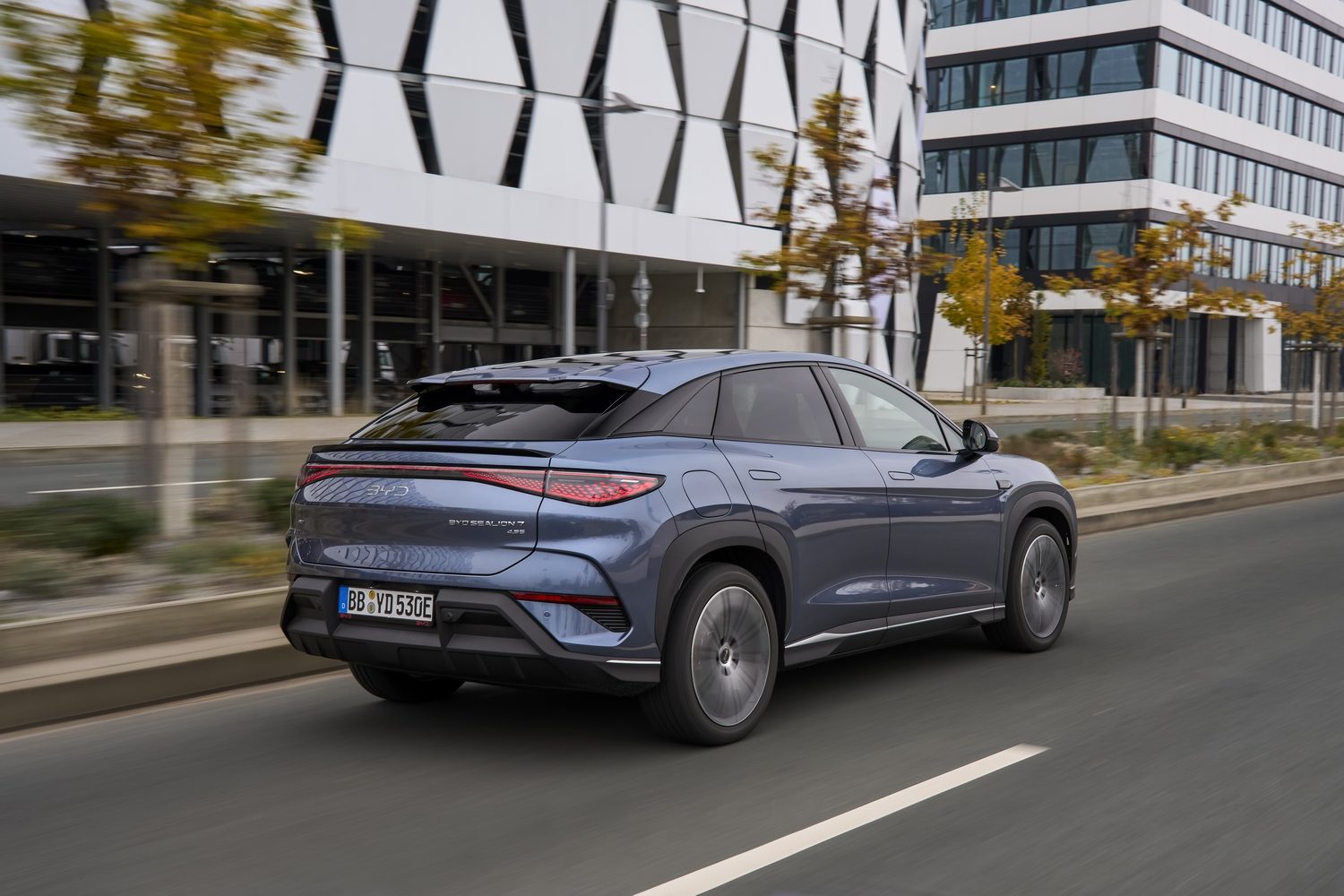
We found this to be on the firm side, and in certain scenarios such as when hitting transverse ridge-like expansion joints, impacts can thump into the cabin, disrupting what is an otherwise refined ride. In contrast, BYD's other SUV, the Seal U (which is only available as a plug-in hybrid) is set up to be much softer and is a lot more comfortable.
Somewhat surprisingly, for a car with such high performance for its segment, the Sealion 7 isn't an involving experience from the driver's perspective. There is limited scope to change some parameters such as steering weight, but the whole package isn't as cohesive as it could be, and ultimately it is more impressive in straight-line acceleration than through a twisting set of bends, where you begin the sense the car struggle with its weight.
There are more upsides though, namely in the level of refinement. Use of acoustically optimised glass and sound-deadening materials, plus an electric powertrain, makes it pleasantly quiet at all times. Even on the larger 20-inch wheels (Comfort and Design AWD get 19-inch rims) there's little in the way of perceptible road noise and its aerodynamic shape also keeps wind roar to a minimum at higher motorway speeds.
While top speed is largely irrelevant to buyers outside Germany where we drove the car, it is worth noting that the Sealion 7 can achieve 215km/h. That figure is thanks to a new electric motor that operates at up to 23,000rpm and does so without the need of a two-speed gearbox. The motor remains compact and relatively light, but more importantly, can react quickly and get up to speed quicker, delivering a more responsive performance.
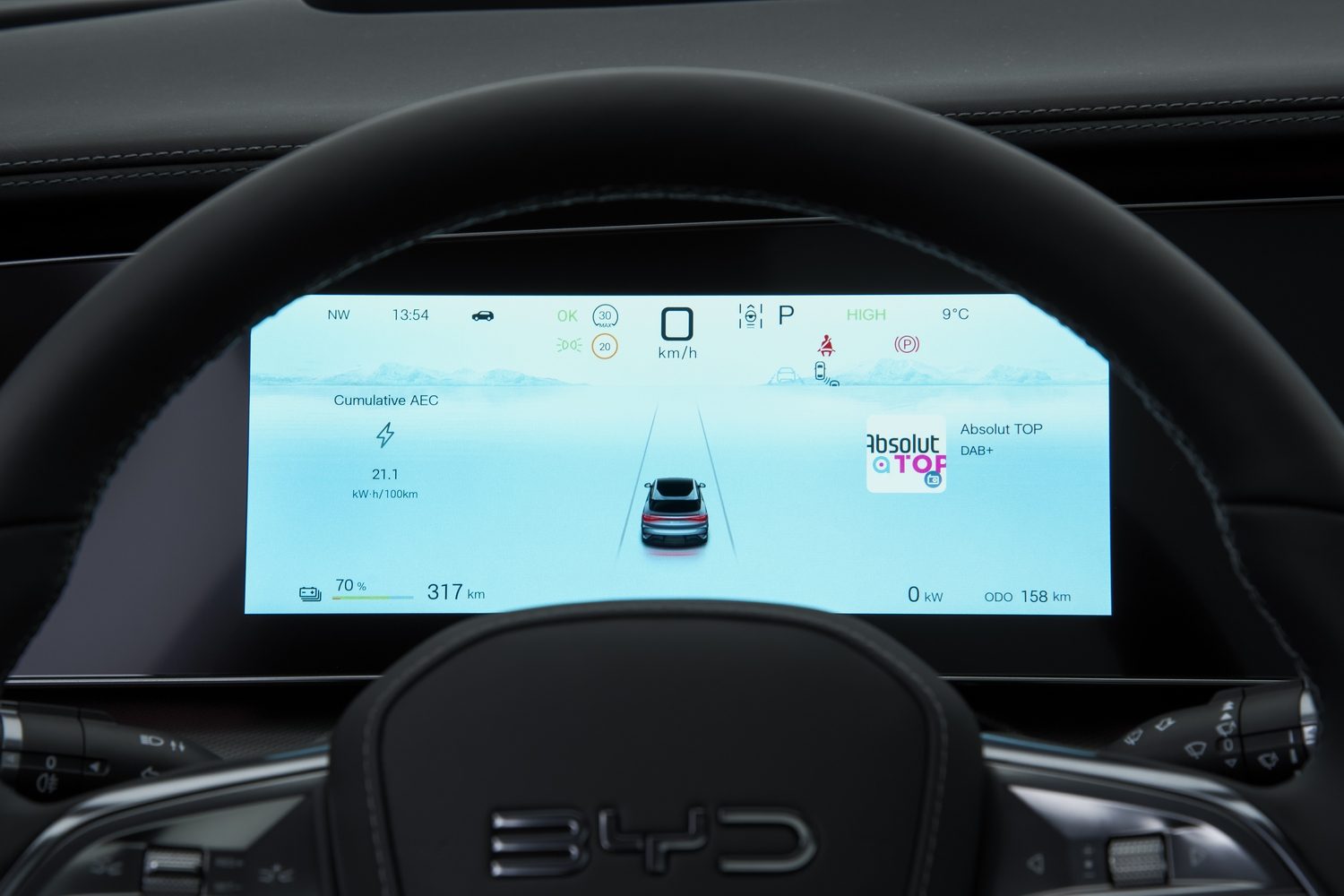
One other aspect that surprised us during out time with the car was how efficient it could be. Officially the Sealion 7 has a combined energy consumption figure of 21.9kWh/100km, but in our limited time that included a variety of different driving settings, we bettered that figure with an average of 18.3kWh/100km. Naturally, every driver will see slightly different results based on driving style and conditions, but it's positive to see that even a potent SUV such as the Sealion 7 can be reasonably efficient.
How much is the BYD Sealion 7 in Ireland?
Irish pricing for the BYD Sealion 7 starts at €45,435 inclusive of VRT relief and SEAI grant. That gets you the Comfort specification which is the rear-wheel-drive setup with the 82.5kWh battery. This version runs on 19-inch wheels and has an official range of up to 482 kilometres. The standard equipment is identical across the three specification grades, so your choice is more down to selecting your preferred powertrain. The Comfort specification with metallic paint costs €47,030.
The mid-grade, all-wheel-drive Sealion 7 is called Design and this costs €52,390 including the SEAI grant (it doesn't qualify for VRT relief). It gets 20-inch wheels, which, along with the dual-motor setup, sees the official driving range between charges drop to 456 kilometres. Adding the metallic paint option to this model drives the price up to €53,490.
Topping the range is Sealion 7 Excellence tested here, costing €56,490 including the SEAI grant. What differentiates this version is that it gets a larger 91.3kWh capacity battery. Combined with the dual-motor setup, the Excellence has a driving range of 502 kilometres and a higher peak DC charging rate of 230kW - versus the 150kW on the Comfort and Design variants.
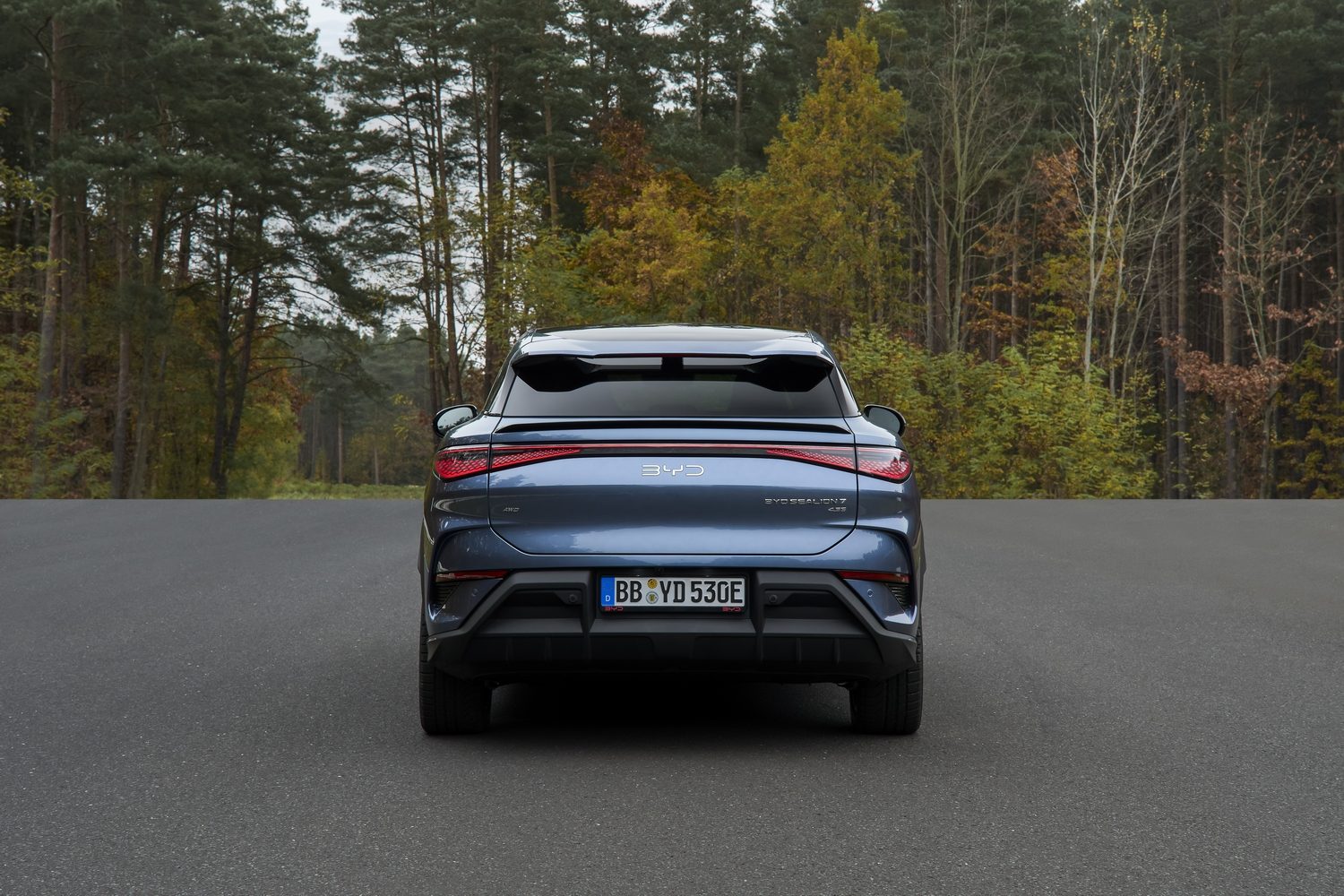
Ask us anything about the BYD Sealion 7
If there's anything about the BYD Sealion 7 we've not covered, or you'd like advice in choosing between it and other vehicles, you can avail of our (completely free) expert advice service via the Ask Us Anything page.

